#Dating application development process
Explore tagged Tumblr posts
Text
Dating applications are popular at this time everyone needs a perfect partner. In this app, we match users based on their interests, preferences, and lifestyles. Helpfulinsightsolution Provides the best dating apps. Dating Application Development should come with search filters, and push notifications. In this app, we involve in-app messaging, video conferencing, and analytic dashboards. At this time dating applications are fast growing. Dating Applications connect people who are looking for love or other pleasures.

#Dating application development pdf#Dating application development framework#Dating application development ppt#Dating application development process#Dating application development tools#how to create a dating app for free#dating app development company
0 notes
Text
Dragon Age: The Veilguard: Strangled by Gentle Hands
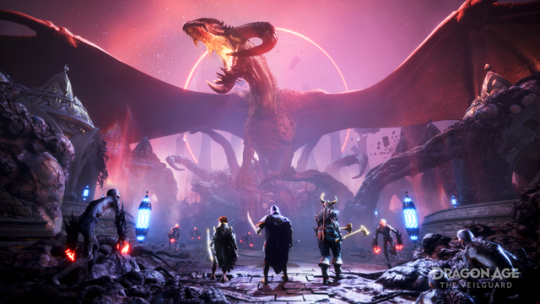
*The following contains spoilers*
“You would risk everything you have in the hope that the future is better? What if it isn’t? What if you wake up to find the future you shaped is worse than what was?”
– Solas, Dragon Age: Inquisition (2014)
I. Whatever It Takes
My premium tickets for a local film festival crumpled and dissolved in my pants pocket, unredeemed as they swirled in the washing machine. Throughout that October weekend in 2015, I neglected my celebratory privileges, my social visits to friends, and even my brutal honors literary theory class. All because a golden opportunity stretched before me: a job opening for a writing position at the once-legendary BioWare, with an impending deadline.
The application process wasn’t like anything I’d seen before. Rather than copy+paste a cover letter and quickly swap out a couple of nouns here and there, this opening required me to demonstrate my proficiency in both words and characters – namely, BioWare’s characters. Fanfiction wasn’t normally in my wheelhouse – at the time, I had taken mainly to spinning love sonnets (with a miserable success rate). But I wouldn’t balk at this chance to work on one of my dream franchises – especially since the job prospects for fresh English BAs weren’t exactly promising. So, I got to work crafting a branching narrative based on the company’s most recent title: Dragon Age: Inquisition. Barely two months prior, I saw the conclusion of that cast’s story when the Inquisitor stabbed a knife into a map and swore to hunt her former ally, Solas, to the ends of the earth. Now it was my turn to puppeteer them, to replicate the distinct voice of each party member and account for how they’d react to the scenario I crafted. And if it went well, then maybe I’d be at the tip of the spear on that hunt for Solas. Finishing the writing sprint left me exhausted, but also proud of my work.
The folks at BioWare obviously felt differently, because I received a rejection letter less than a week later. Maybe they found my story trite and my characterization inaccurate, or maybe they just didn’t want to hire a student with no professional experience to his name. Regardless, I was devastated. It wouldn’t be until years later that I learned that, had my application been accepted, I likely would’ve been drafted into working on the studio’s ill-fated looter shooter, Anthem (2019), noteworthy for its crunch and mismanagement. My serendipitous rejection revealed that sometimes the future you strive to build was never meant to match your dreams. What seemed like an opportunity to strike oil actually turned out to be a catastrophic spill.
Still, my passion for the Dragon Age series (as well as Mass Effect) persisted in the face of BioWare’s apparent decline. I maintain that Inquisition is actually one of the studio’s best games, and my favorite in the series, to the point where I even dressed up as Cole for a convention one time. The game came to me at a very sensitive time in my life, and its themes of faith vs falsehood, the co-opting of movements in history, and the instability of power all spoke to me. But I will elaborate more on that at a later date. My point is, I held on to that hope that, in spite of everything, BioWare could eventually deliver a satisfactory resolution to the cliffhanger from their last title. Or perhaps it was less hope and more of a sunk cost fallacy, as an entire decade passed with nary a peep from Dragon Age.
As years wore on, news gradually surfaced about the troubled development of the fourth game. Beginning under the codename “Joplin” in 2015 with much of the same creative staff as its predecessors, this promising version of the game would be scrapped two years later for not being in line with Electronic Arts’s business model (i.e. not being a live-service scam). Thus, it was restarted as “Morrison”. The project cantered along in this borderline unrecognizable state for a few years until they decided to reorient it back into a single-player RPG, piling even more years of development time onto its shaky Jenga tower of production. Indeed, critical pieces were constantly being pulled out from the foundations during this ten year development cycle. Series regulars like producer Mark Darrah and director Mike Laidlaw made their departures, and the project would go on to have several more directors and producers come and go: Matthew Goldman, Christian Dailey, and Mac Walters, to name a few key figures. They eventually landed on John Epler as creative director, Corinne Busche as game director, and Benoit Houle as director of product development. Then came the massive layoffs of dozens of employees, including series-long writer Mary Kirby, whose work still made it into the final version of DA4. Finally, the game received a rebranding just four months before release, going from Dreadwolf (which it had been known as since 2022) to The Veilguard (2024) – a strange title with an even stranger article.
Needless to say, these production snags did not inspire confidence, especially considering BioWare’s been low on goodwill between a string of flops like Anthem and Mass Effect: Andromeda (2017) and, before that, controversial releases like Dragon Age II (2011) and Mass Effect 3 (2012). The tumult impacted The Veilguard’s shape, which scarcely resembles an RPG anymore, let alone a Dragon Age game. The party size is reduced from four to three, companions can no longer be directly controlled, the game has shifted to a focus on action over tactics a la God of War (2018), the number of available abilities has shrunk, and there’s been a noticeable aesthetic shift towards a more cartoonish style. While I was open to the idea of changing up the combat (the series was never incredible on that front), I can’t get over the sensation that these weren’t changes conceived out of genuine inspiration, but rather vestigial traces from the live-service multiplayer iteration. The digital fossil record implies a lot. Aspects like the tier-based gear system, the instanced and segmented missions, the vapid party approval system, the deficit of World State import options, and the fact that rarely does more than the single mandatory companion have anything unique to say on a quest – it all points to an initial design with a very different structure from your typical single-player RPG. The Veilguard resembles a Sonic Drive-In with a mysterious interior dining area – you can tell it was originally conceived as something else.1
That said, the product itself is functional. It contains fewer bugs than any previous game in the franchise, and maybe BioWare’s entire catalog for that matter. I wouldn’t say the combat soars, but it does glide. There’s a momentum and responsiveness to the battle system that makes it satisfying to pull off combos and takedowns against enemies, especially if you’re juggling multiple foes at once. Monotony sets in after about thirty or forty hours, largely due to the fact that you’re restricted to a single class’s moveset on account of the uncontrollable companions. Still, this design choice can encourage replay value, as it does in Mass Effect, and free respec options and generous skill point allocations offset the tedium somewhat.
While the character and creature designs elicit controversy – both for the exaggerated art direction and, in the case of demons and darkspawn, total redesign – the environmental art is nothing short of breathtaking. I worried that this title would look dated because of how long it had been in development and the age of the technology it was built upon. Those fears were swiftly banished when I saw the cityscapes of Minrathous, the cyclopean architecture of the Nevarran Grand Necropolis, or the overgrown ruins of Arlathan. But like everything in The Veilguard, it’s a double-edged sword. The neon-illuminated streets of Docktown, the floating citadel of the Archon’s Palace, and the whirring mechanisms of the elven ruins evoke a more fantastically futuristic setting that feels at odds with all three previous titles (even though all three exhibited a stylistic shift to some extent). It aggravates the feeling of discordance between this rendition of Thedas and the one returning players know.
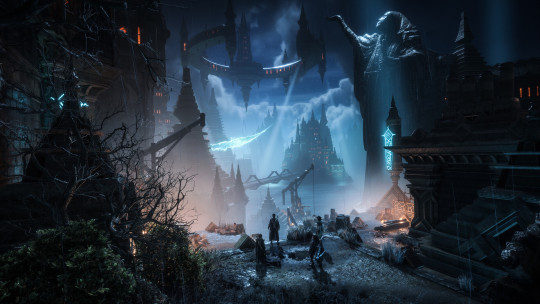
All of these elements make The Veilguard a fine fantasy action-adventure game – even a good one, I’d say. But as both the culmination of fifteen years of storytelling and as a narrative-based roleplaying game – the two most important facets of its identity – it consistently falls short. Dragon Age began as a series with outdated visuals and often obtuse gameplay, but was borne aloft by its worldbuilding, characterization, and dialogue. Now, that paradigm is completely inverted. The more you compare it to the older entries, the more alien it appears. After all these years of anticipation, how did it end up this way? Was this the only path forward?
Throughout The Veilguard’s final act, characters utter the phrase “Whatever it takes,” multiple times. Some might say too many. I feel like this mantra applied to the development cycle. As more struggles mounted, the team made compromise after compromise to allow the game to exist at all, to give the overarching story some conclusion in the face of pressure from corporate shareholders, AAA market expectations, and impatient fans. Whatever it takes to get this product out the door and into people’s homes.
This resulted in a game that was frankensteined together, assembled out of spare parts and broken dreams. It doesn’t live up to either the comedic heights or dramatic gravity of Inquisition’s “Trespasser” DLC from 2015, despite boasting the same lead writer in Trick Weekes. Amid the disappointment, we’re left with an unfortunate ultimatum: It’s either this or nothing.
I don’t mean that as a way to shield The Veilguard from criticism, or to dismiss legitimate complaints as ungrateful gripes. Rather, I’m weighing the value of a disappointing reality vs an idealized fantasy. The “nothing”, in this sense, was the dream I had for the past decade of what a perfect Dragon Age 4 looked like. With the game finally released, every longtime fan has lost their individualized, imaginary perfection in the face of an authentic, imperfect text. Was the destruction of those fantasies a worthy trade? It doesn’t help that the official artbook showcases a separate reality that could’ve been, with a significant portion dedicated to the original concepts for Joplin that are, personally, a lot closer to my ideal vision. I think it would’ve done wonders to ground the game as more Dragon Age-y had they stuck with bringing back legacy characters, such as Cole, Calpernia, Imshael, and the qunari-formerly-known as Sten.
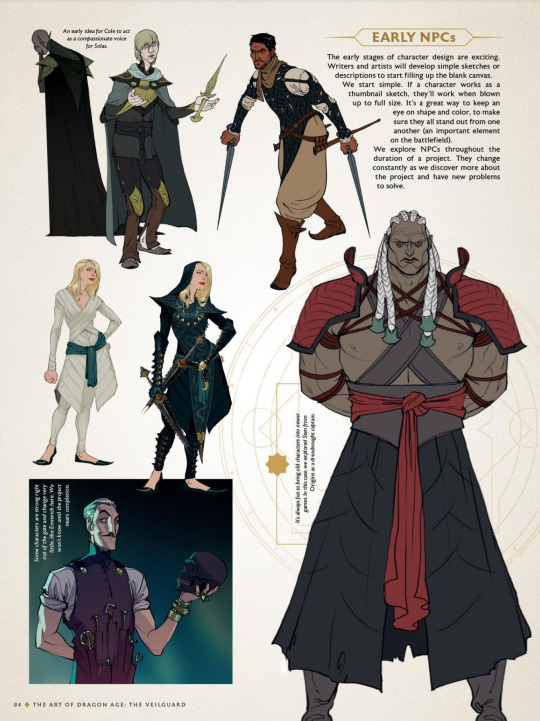
I don’t necessarily hate The Veilguard (I might actually prefer it to Dragon Age II), but I can’t help but notice a pattern in its many problems – a pattern that stems from a lack of faith in the audience and a smothering commitment to safety over boldness. As I examine its narrative and roleplaying nuances, I wish to avoid comparing it to groundbreaking RPGs such as Baldur’s Gate 3 (2023) or even Dragon Age: Origins (2009), as the series has long been diverging from that type of old-school CRPG. Rather, except when absolutely necessary, I will only qualitatively compare it to Inquisition, its closest relative.
And nowhere does it come up shorter to Inquisition than in the agency (or lack thereof) bestowed to the player to influence their character and World State.
II. Damnatio Memoriae
No, that���s not the name of an Antivan Crow (though I wouldn’t blame you for thinking so, since we have a character named “Lucanis Dellamorte”). It’s a Latin phrase meaning “condemnation of memory”, applied to a reviled person by destroying records of their existence and defacing objects of their legacy. In this case, it refers to the player. When it comes to their influence over the world and their in-game avatar, The Veilguard deigns to limit or outright eliminate it.
Save transfers that allow for the transmission of World States (the carrying over of choices from the previous games) have been a staple of the Dragon Age and Mass Effect franchises. Even when their consequences are slight, the psychological effect that this personalization has on players is profound, and one of many reasons why fans grow so attached to the characters and world. At its core, it’s an illusion, but one that’s of similar importance to the illusion that an arbitrary collection of 1s and 0s can create an entire digital world. Player co-authorship guarantees a level of emotional investment that eclipses pre-built backgrounds.
However, The Veilguard limits the scope to just three choices, a dramatic decrease from the former standard. All import options come from Inquisition, with two just from the “Trespasser” expansion. One variable potentially impacts the ending, while the other two, in most cases, add one or two lines of dialogue and a single codex entry. Inquisition, by contrast, imported a bevy of choices from both previous games. Some of them had major consequences to quests such as “Here Lies the Abyss” and “The Final Piece”, both of which incorporated data from two games prior. The Veilguard is decidedly less ambitious. Conspicuously absent options include: whether Morrigan has a child or not, the fate of Hawke, the status of the Hero of Fereldan, the current monarchs of Fereldan and Orlais, the current Divine of the southern Chantry, and the individual outcomes of more than two dozen beloved party members across the series. Consequently, the fourth installment awkwardly writes around these subjects – Varric avoids mentioning his best friend, Hawke, as does Isabela ignore her potential lover. Fereldan, Orlais, and the Chantry are headed by Nobody in Particular. Morrigan, a prominent figure in the latest game, makes no mention of her potential son or even her former traveling companions. And the absence of many previous heroes, even ones with personal stakes in the story, feels palpably unnatural. I suspect this flattening of World States into a uniform mold served, in addition to cutting costs, to create parity between multiple cooperative players during the initial live-service version of Morrison. Again, the compromises of the troubled production become apparent, except this time, they’re taking a bite out of the core narrative.
Moreover, the game’s unwillingness to acknowledge quantum character states means that it’s obliged to omit several important cast members. At this point, I would’ve rather had them establish an official canon for the series rather than leaving everything as nebulous and undefined as possible. That way at least the world would’ve felt more alive, and we could’ve gotten more action out of relevant figures like Cassandra, Alistair, Fenris, Merrill, Cole, and Iron Bull. Not to mention that The Veilguard’s half-measure of respectful non-intereference in past World States ultimately fails. Certain conversations unintentionally canonize specific events, including references to Thom Rainier and Sera, both of whom could go unrecruited in Inquisition, as well as Morrigan’s transformation into a dragon in the battle with Corypheus in that game’s finale. But whatever personal history the player had with them doesn’t matter. The entire Dragon Age setting now drifts in a sea of ambiguity, its history obfuscated. It feels as gray and purgatorial as Solas’s prison for the gods.
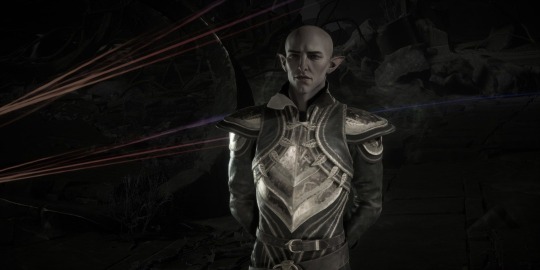
Beyond obscuring the past, The Veilguard restrains the player’s agency over the present. When publications first announced that the game would allow audiences to roleplay transgender identities and have that acknowledged by the party, I grew very excited – both at the encouraging representation, and at the depth of roleplaying mechanics that such an inclusion suggested. Unfortunately, The Veilguard offers little in roleplaying beyond this. The player character, Rook, always manifests as an altruistic, determined, friendly hero, no matter what the player chooses (if they’re offered choices at all). The selections of gender identity and romantic partner constitute the totality of how Rook defines themselves, post-character creation – exceptions that prove the rule of vacancy. Everything else is set in stone. The options presented are good, and should remain as standard, but in the absence of other substantive roleplaying experiences, their inclusion starts to feel frustratingly disingenuous and hollow, as if they were the only aspects the developers were willing to implement, and only out of obligation to meet the bare minimum for player agency. In my opinion, it sours the feature and exudes a miasma of cynicism.
Actual decisions that impact the plot are few and far between, but at least we have plenty of dialogue trees. In this type of game, dialogue options might usually lead to diverging paths that eventually converge to progress the plot. You might be choosing between three different flavors of saying “yes”, but as with the World States, that illusion of agency is imperative for the roleplaying experience. The Veilguard doesn’t even give you the three flavors – the encouraging, humorous, and stern dialogue options are frequently interchangeable, and rarely does it ever feel like the player is allowed to influence Rook’s reactions. Relationships with companions feel predetermined, as the approval system has no bearing on your interactions anymore. There are so few moments for you to ask your companions questions and dig in deep compared to Inquisition. Combined together, these issues make me question why we even have dialogue with our party at all. Rook adopts the same parental affect with each grown adult under their command, and it feels like every conversation ends the same way irrespective of the player’s input. With the exception of the flirting opportunities, they might as well be non-interactive cutscenes.
Rook’s weak characterization drags the game down significantly. With such limited authorship afforded to the player, it’s difficult to regard them as anything more than their eponymous chess piece – a straightfoward tool, locked on a grid, and moving flatly along the surface as directed.
III. Dull in Docktown
On paper, a plot summary of The Veilguard sounds somewhere between serviceable and phenomenal: Rook and Varric track down Solas to stop him from tearing down the Veil and destroying the world. In the process, they accidentally unleash Elgar’nan and Ghilan’nain, two of the wicked Evanuris who once ruled over the elven people millenia ago. With Solas advising them from an astral prison, Rook gathers a party together to defeat the risen gods, along with their servants and sycophants. Over the course of the adventure, they uncover dark truths about the origins of the elves, the mysterious Titans, and the malevolent Blight that’s served as an overarching antagonistic force. Eventually, Rook and friends join forces with Morrigan and the Inquisitor, rally armies to face off with their foes, and slay both the gods and their Archdemon thralls before they can conjure the full terror of the Blight. As Solas once again betrays the group, Rook and company have to put a decisive stop to his plans, which could potentially involve finally showing him the error of his ways.
The bones of The Veilguard’s story are sturdier than a calcium golem. Problems arise when you look at the actual writing, dialogue, and characterization – the flesh, blood, and organs of the work.

I’ve seen others chide the writing as overly quippy, but that better describes previous titles. Rather, I think The Veilguard’s dialogue is excessively utilitarian and preliminary, like a first draft awaiting refinement. Characters describe precisely what’s happening on screen as it’s happening, dryly exposit upon present circumstances, and repeat the same information ad nauseum. This infuriating repetition does little to reveal hidden components of their personalities, or their unique responses to situations. You won’t hear anything like Cole’s cerebral magnetic poetry or Vivienne’s dismissive arrogance. Many exchanges could’ve been uttered by Nobody in Particular, as it’s just dry recitation after recitation. It almost feels like watching an English second language instructional video, or a demonstration on workplace safety precautions. Clarity and coherence come at the cost of characterization and charisma.
Words alone fail to make them interesting. Most companions lack the subtlety and depth I had come to expect from the franchise, with many conversations amounting to them just plainly stating how they’re feeling. Most rap sessions sound like they’re happening in a therapist’s office with how gentle, open, and uncomplicated they feel. Compare this to Inquisition, where every character has a distinct voice (I should know, I had to try to copy them for that stupid application), as well as their own personal demons that it betrays: Sera’s internalized racism, hints of Blackwall’s stolen valor, Iron Bull’s espionage masked by bluster, or Solas’s lingering guilt and yearning for a bygone age. These aspects of their characters aren’t front and center, but things the audience can delve into that gives every moment with them more texture. The Veilguard’s companions lay out all their baggage carefullly and respectfully upfront, whether it’s Taash’s multiculturalism and gender identity issues or Neve’s brooding cynicism towards Tevinter’s underbelly. You’ve plumbed the depths of their personas within the first few minutes of meeting most of them.
Small exceptions exist. Professor Emmerich Volkarin stands out from the rest of the cast as a particularly inspired character: a charming, Vincent Price-like necromancer. His attachment to tombs and necromancy as a way to cope with his crippling fear of death makes for curiously compelling melodrama. The way in which he ultimately has to face his fear – either by foregoing his opportunity for immortality to save his beloved skeletal ward, Manfred, or by allowing his friend to pass on so that he can transcend into a new type existence – rises above the other binary choices in the game by being both narratively interesting and legitimately difficult to judge. Still, I feel Emmerich’s whole “lawful good gentleman necromancer” conceit, while a unique and clever subversion of tropes, would’ve worked better if it actually contrasted with anyone else in the party. Instead, the whole crew is full of unproblematic do-gooders who are forbidden by the game to nurture any meaningful interpersonal conflict. While I’d appreciate this lack of toxicity in my real-life relationships, fictional chemistry demands more reactive ingredients.

The Veilguard’s developers frequently positioned the game as “cozy” and about a “found family”, but I can guarantee you that there’s more tension at my Thanksgiving dinners than there is anywhere in this title. This family would get along swimmingly even during a presidential election. The thing about the “found family” trope is that it’s more satisfying when it’s earned. Here, it represents the default state, the starting point, and the status quo that they will always return to. Any minor squabbles (Harding wanting to sleep in the dirt, Emmerich taking too many books on a camping trip, Taash not liking necromancy) are introduced and squashed within the same scene. They all feel so extraneous. There’s so little friction among the companions here that you’d think it disproves Newton’s Third Law. The previous games never struggled in this regard, which makes the choices here all the more baffling.
Beyond the intra-party dynamics, characters lack grit or darkness to them – even when the narrative absolutely calls for it. Remember how I described the necromancer as lawful good (to use traditional Dungeons and Dragons alignments)? Yeah, that’s every character. Even the demonic assassin. Lucanis is a notorious hitman possessed by a demon of Spite, and possibly the weakest character of the game. This may or may not be due to the fact that his writer, Mary Kirby, was laid off mid-development. Regardless, he has noticeably less content than the other party members and generally feels unfinished. The demonic possession storyline goes nowhere; he doesn’t exorcise Spite, nor does he learn more about it or how to live with it. Instead, Spite is just an excuse to give Lucanis cool spectral wings (which he will use to fail several assassination attempts). The demon itself mostly just comes across as rude rather than threatening. The biggest issue, however, stems from the absence of any edge to Lucanis. When confronting his traitorous cousin, Ilario – the man who sold out Lucanis’s family to an enemy faction, kidnapped his grandmother, and made multiple attempts on his life – our grizzled, hardened assassin, pushed to the brink, demands… due process. Seriously, if your choices have led Lucanis to have a hardened heart, his method for dealing with the grievous traitor is sending him to jail. That’s The Veilguard’s idea of vindictive brutality among a clan of unforgiving murderers-for-hire. By contrast, Inquisition features Sera insubordinately murdering a stuck-up nobleman for talking too much. I believe that if modern BioWare had written The Godfather (1972), it would’ve ended with Michael Corleone recommending his brother-in-law to attend confession and seek a marriage counselor.
The writers seem intent on making the cast wholly unproblematic, with no way that the audience could ever question their morality or taste the delicious nuance of seeing someone you like do something bad. Measures were taken to child-proof every aspect of the good guys so that they couldn’t possibly be construed as anything else – even if it constricts them to the point of numbness and eventual atrophy.
To make things as palatable and accessible as possible, the language itself was dumbed down. Characters make frequent use of neologisms and bark phrases like “Suit up,” or “These guys go hard.” It emulates popular blockbuster superhero stuff rather than staying true to the diction the series traditionally employed. It’s all about the team, and the entire Dragon Age world has been stripped down into simplistic conflicts and recognizable stock characters.
This is why The Veilguard’s story largely fails. Despite being ostensibly being about the characters, they come off as an afterthought. Most of the time, only the sole requisite follower has anything to say on a given mission. Even in combat, their wholeness as fully-implemented party members falls short of expectations. Their damage output pales in comparison to the Rook’s, they have no health and cannot be downed in battle, and they mainly exist to give the player three extra ability slots. That’s the game’s true ethos for the companions, whether in combat or dialogue – utility, tools to make things happen rather than elegantly crafted identities. We end up with the largest amount of content per companion among any game in the franchise, only to have the weakest roster.
I know these writers can do better, because I’ve seen them do better. Trick Weekes wrote Iron Bull, Cole, and Solas in Inquisition, as well as Mordin Solus and Tali’Zorah in Mass Effect 2 (2010) and Mass Effect 3. Mary Kirby wrote Varric throughout the series, as well as Sten and Loghain in Origins. Plenty of other experienced writers, such as Sylvia Feketekuty and John Dombrow also contributed, so I can’t put any of the blame on a lack of skill. I don’t know if the mistake was trying to appeal to a wider audience, or if the constant reorientations of the DA4 project drained the crew’s passion and left them lacking in time to polish things.
I personally suspect that the writers had to rush out a script for all of the voiced dialogue. A video from August of 2020 showed off the voice actors for Davrin and Bellara, more than four years before the final game’s release. I think the codex entries, letters, and missives that you find throughout the game, which consist of only text, are much better written than the dialogue. My theory is that the writers had more time to revise and spruce up these tidbits, where edits were minimally invasive, as far as production is concerned. But my knowledge is limited; after all, BioWare rejected my application almost a decade ago.
Still, there are aspects of The Veilguard’s plot that I enjoy. The lore reveals were particularly satisfying2, and many felt rewarding after a decade of speculation. I called that elves were originally spirits, as well as the connection between the Archdemons and the Evanuris, but I wouldn’t have guessed that the Blight formed out of the smoldering rage of the Titans’ severed dreams. I’d concisely describe The Veilguard’s story as the opposite of Mass Effect 3: Whereas ME3 did excellent character work, the characterization in The Veilguard leaves much to be desired. Whereas ME3’s tone was overwhelmingly grim, The Veilguard feels inappropriately positive. Whereas ME3’s lore reveals ruined much about the series’s mystique, The Veilguard’s helped tie the setting’s history together. And whereas ME3 fumbled the ending about as much as it possibly could, The Veilguard actually coalesces into a spectacular third act.
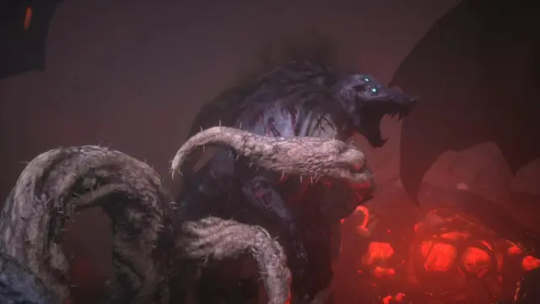
While I think the twist with Varric’s death is weak (outright pitiful compared to the Dread Wolf twist of Inquisition), the actual events that make up the finale carry a momentum and urgency that the rest of the game severely lacked. Everything from the sacrifice and kidnapping of Rook’s companions to the slaying of Ghilan’nain to the awe-inspiring battle between the Dread Wolf and Archdemon Lusacan – the whole affair takes the best parts of Mass Effect 2’s Suicide Mission and elevates it to the scale of an apocalyptic series finale. Ultimately, Solas takes center stage as the final antagonist, and the drama crescendos to a height the rest of the game desperately needed. He remains the most interesting character in the game and perhaps the franchise, and thankfully, the resolution to his story did not disappoint me (though I would’ve preferred the option for a boss battle against his Dread Wolf form if the player’s negotiations broke down). So in that sense, I think the worst possible scenario was avoided.
But is that really worth celebrating? Averting complete disaster? Exceeding the lowest standards? In many regards, The Veilguard still could have been – should have been – more.
IV. A World of Tranquil
In my essay on Final Fantasy VII: Rebirth (2024), I briefly discussed a trend in media to sand off the edges so as not to upset the audience in any way. The encroachment of this media sanitization seems to be an over-correction to the brimming grimness of late 2000s and early 2010s fiction (to which the first two Dragon Age titles belong), which earned comparable levels of criticism. Like Solas, I occasionally feel trapped in a cycle of regret, where it feels like our previous yearning for less aggressive, mean-spirited content led to a media landscape that prioritized patronizingly positive art. Now it’s clear to me that, in order to have a point, you need to have an edge.
Dragon Age historically drew a very progressive audience, and many of them congregated around Tumblr in that website’s heyday. Tumblr has garnered something of a reputation for overzealous discourse and sensitivity among its userbase, and I think that the developers of The Veilguard, in an attempt to cater to one of their core audiences, may have misunderstood both that passion and the fundamental appeal of their products. They became so concerned about optics, about avoiding politically charged criticism, that they kneecapped their world-building, rendering it as inoffensive and sterile as possible. It’s not so much “PC culture” as it is “PG culture.”
To that end, the various governments, factions, and societies of Thedas lost their edge. Dragon Age previously presented itself as anti-authoritarian by showcasing the rampant abuses of power across all cultures. Whether it was the incarceration of mages under the Chantry, the slavery practiced by the Tevinter Imperium, the expansionist anti-individualism of the Qun, the restrictive dwarven caste system, or the rampant racism against elves, social strife abounded in this world. I think that’s one thing that drew so many marginalized fans to the series. But the correlation of fictional atrocities with those of real life frequently prompted volatile discourse, with many concerned about how allegedly allegorized groups were being represented. You began to see countless essays pop up by folks who use the phrase “blood quantum” more than any healthy person should for a setting about wizards. BioWare responded to this by making Thedosian society wholly pleasant and the people in power responsible and cool and the disparate cultures tolerant and cooperative. If nothing’s portrayed negatively (outside of the cartoonishly evil gods), nobody can take offense, right?
For starters, the Antivan Crows have gone from an amoral group of assassins to basically Batman. These figures, which previously purchased children off slave markets to train them into killers, are now the “true rulers” of Antiva, by which the official government derives its authority. The Crows in The Veilguard stand against the insurgent qunari army as heroes of the common folk. They’re not an unscrupulous faction that Rook is reluctantly forced to ally with for the greater good; no, the Crows are simply good guys now. When the pompous governor of Treviso rails against them, with such audacious claims as “assassins and thugs should not represent the citizenry,” we’re meant to laugh at the governor’s foolishness. The unintentional implication this sends is that lethal vigilantism and unchecked power are cool because the people who use it are cool and stylish. The slave trade goes unacknoweldged; Antivan children want to grow up to be assassins now. The Crows never do anything wrong in The Veilguard – the governor is later revealed to be cooperating with the invaders for their own power. BioWare avoids the unpleasantness inherent in the Crows’ concept by pretending it never existed.
Perhaps more ridiculous is the Lords of Fortune, a new faction of pirates and treasure hunters based out of Rivain. Except they don’t really do piracy or treasure hunting. The game goes to lengths to ensure that the audience knows that the Lords don’t steal important cultural artifacts from any of the tombs and ruins they raid. What do they steal, then? There is no such thing as an ethical treasure hunter – plundering indigenous sites for souvenirs is inherently problematic – but the writers wanted to reap the appeal of adventurous swashbucklers without any of the baggage, regardless of whether it makes sense or not3. It comes across as a child’s idea of a pirate: they’re not thinking about the murder and looting, just the funny men with eye-patches who say “ARRR!” The developers want us to like the Lords of Fortune, and to that end, they can’t do anything culturally insensitive – even fictional disrespect toward a made-up culture. This is doubly amusing because the Lords are represented by Isabela from Dragon Age II. The same Isabela that kicked off a war with the qunari by stealing their holy book, the Tome of Koslun. This irony goes unacknowledged by the game.4
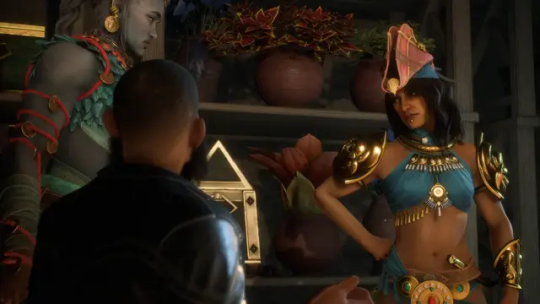
When these rogue buccaneers aren’t busy giving land acknowledgments to displaced Dalish elves or whatever, they’re enjoying their nonviolent coliseum. Pirates revel in bloodsport, but only so long as no actual blood is spilled. The Lords refuse to fight prisoners or animals in their arena, as they find such acts too cruel. I guess they’re all big Peter Singer readers. Instead, they summon spirits to adopt the visages of common enemies so that the player can kill them with a clean conscience. It’s another example of wanting to have your cake and eat it too – they wanted to create a glory hunter/gladiator faction, but couldn’t stand the underlying implications of such. So they twisted and bent them to fit into their unproblematic paradigm, leaving the Lords flavorless and lame. They barely even contribute to the main story, and they’re practically the only look we get into Rivaini society (which remains criminally underdeveloped).
More tragic is the handling of the qunari, once one of the most unique and nuanced civilizations in the Dragon Age setting. The Qun, as portrayed in the first three installments, is a society that demands all of its composite parts work in harmony. Thus, they have predetermined vocations for their children, rigid gender roles, strict codes of conduct, and an ambition to “enlighten” the rest of the world. While the Qun has often been presented as antagonistic toward the heroes, the series has commonly balanced its portrayal by showing how seductive its absolutism can be for people without hope. In some cases, life under the Qun is preferable, as is the case with former Tevinter slaves. Conformity becomes comfort when the world is regularly threatening to split apart.
The Veilguard opts for a different approach. See, Rook’s not fighting members of the Qun in this game – they’re fighting the Antaam, the former qunari military. The Veilguard constantly reiterates that the Antaam, which makes up one of the three branches of the Qun, has broken off and decided to invade, pillage, and stoke chaos. BioWare didn’t want the questionable morality and complexity of fighting an invading people from a humanized, multi-faceted culture, so they removed their culture. Their efforts to turn the non-Western-coded qunari into something digestible for their mistaken conception of a modern audience instead results in two caricatures: one being a fetishized, perfect society where there are no perceivable social ills; and the other a bunch of rampaging brutes.
Contending with a realized conception of Plato’s Republic mixed with the Ottoman Empire makes for more compelling drama than a horde of murderous giants. Again, BioWare wanted to have it both ways, and they still needed nameless, faceless orcs to kill. So every bit about the qunari’s militancy, imperialism, and repression coexisting alongside some of their more progressive ideas and communal unity is stripped of its context and meaning. Blame is placed solely on the Antaam, who no longer represent (and retroactively, never represented) the Qun’s ideology. It’s a cowardly compromise, attempting to pin the blame of all the Qun’s failings on a renegade military and seeking to exonerate the political and social apparatuses of their culpability.
At one point, a minor character named Seer Rowan lectures to an ignorant human (a proxy for the audience absorbing these retcons) that qunari society has always been egalitarian in practice, with mages enjoying freedom there. Previous games showed that the qunari shackle their “saarebas” mages, stitch their mouths, cut out their tongues, and teach them to commit suicide if they ever stray from their masters. However, we’re now assured that this is only practiced under the Antaam, and No True Qunari would ever do such a thing. Ignore the fact that, in Inquisition, we witness the enslaved saarebas under the supervision of the Ben-Hasserath, a subdivision of the Ariqun (i.e. not part of the Antaam). In fact, the Antaam that Rook fights in The Veilguard never command saarebas at all. They’re completely absent from the game (likely because the image of the bound, mutilated minority was too much for The Veilguard’s sensibilities). Seer Rowan’s weak, conciliatory retcon can’t even justify itself in its own game. The scolding diatribe communicates an intrinsic misunderstanding of the Qun by the writers – namely, it continues the pattern established with the Antivan Crows that the mechanics of power in society are fundamentally good as long as aberrant forces aren’t in charge. While I understand the desire to be conscientious about the portrayal of fictional cultures that draw upon non-Western traditions and iconography (which have historically been demonized in media), glamorizing the Qun and stripping it of its realistic nuance does little to alleviate any problems with representation. If anything, it creates new ones.
But hey, now we have our faceless orcs to guiltlessly slaughter. That’s what the Antaam’s been reduced to, bereft of the ideology that made them people. We kill them because they’re strange and scary and foreign and seeking to destroy our cities for fun. They remain the most prominent representation of the qunari in-game, barring our party member Taash. BioWare’s attempts to reverse what they viewed as problematic components to the qunari instead devolved into the very tropes they wished to avoid.
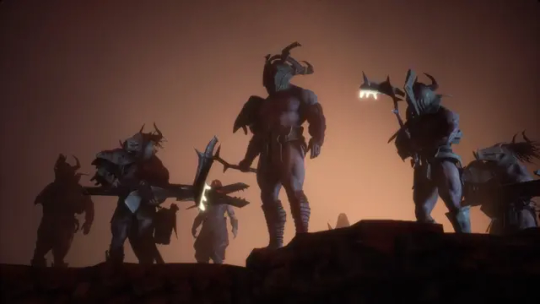
Which leads us to the elves. Much of the series’s discourse has surrounded the portrayal of the long-suffering elven people, who endure slavery under Tevinter, expulsion from their homeland in the Dales, confinement in ghettos, and the general disdain from other races. The games’ stories use symbolic shorthand of real-life oppressed peoples to communicate these tragedies, and this has led to a variety of intense, emotional interpretations over the years. The unending misery of the systematically marginalized elves hasn’t gone unnoticed by the fanbase – and their criticisms haven’t gone unnoticed by the developers. To quote The Veilguard’s creative director, John Epler, in an interview with Polygon:
“Dragon Age has not always been the kindest to the Dalish [elves]. Somebody once made a joke to me, and it’s not untrue, that it’s possible to wipe out a Dalish clan in all three of the games in some way.”
He and others on the development team must’ve thought elves needed a break, because the omnipresent racism against them vanishes completely in The Veilguard. Tevinter, an empire built on the back of chattel slavery, doesn’t show any of that. Consequently, it feels like players in the know still haven’t seen the true face of Tevinter, despite spending half a game there. The notion that the capital of Minrathous gives now is one of a prosperous city that’s centuries ahead of the countries down south, rather than a cruel regime cracking the whip at every opportunity. Perhaps the writers weren’t comfortable portraying this, or felt that their audience might not be amenable to it after years of incendiary argumentation. Nevertheless, it castrates their established world-building and robs us of the opportunity to witness true elven liberation in the climax. With both the fall of Minrathous and the toppling of the tyrannical elven gods, we could have delivered a much needed catharsis after four games of oppression, but The Veilguard forgoes this storytelling opportunity to play it safe.
I worry that this hesitancy originated from anxieties about the sensitivity of depicting marginalized peoples in brutal, dehumanizing conditions, and how that might look to more fragile viewers. But I think it’s important for all players, watchers, and readers to know that, though there might be aspects shared between them, fictional minorities are distinct from real ones.
Dragon Age’s elves are aesthetically Celtic. Their residency in alienages evokes images of Disapora Jews in Europe. Their Long Walk after being driven from the Dales calls back to the Trail of Tears, sharing an experience with Native Americans. Their subsequent migratory nature is reminiscent of the Romani people. And their ancient empire of Arlathan, with its large columns and temples of worship, headed by ascended humanoid (for lack of a better term) deities that cast down an enemy called the Titans, and which has since had its religion and culture co-opted and renamed by Roman-inspired Tevinter invites comparisons to classical Greece.
My point is, the elves of Dragon Age don’t represent one group of people, because fictional cultures are constructs drawing from countless inspirations. If they represent anything beyond themselves, it’s the idea of a proud people that’s fallen under the yoke of conquering powers – a supervictim to embody all. The idea that one must be limited in their storytelling options based on how the portrayal might reflect upon or disrespect an existing culture is flawed, in my opinion. In the overwhelming majority of cases, coding cannot be read as a 1:1 allegory, especially in speculative fiction like science-fiction and fantasy. I believe the most mature way to evaluate a story isn’t to try to pigeonhole what it’s trying to say say about who, as if there’s some insidious encrypted message in the text. Rather, it’s to see the forest through the trees and interpret the work as a complete whole in itself.
On that basis, I ask: would it have been so bad to see some of those enslaved elves, praying for salvation, side with their manipulative, nefarious gods? To add some nuance to the conflict with Elgar’nan and Ghilan’nain, would the story of elven liberation not have been better if the game actually engaged with it? Could we actually have a moral quandary with those whom Rook ends up fighting, even if the content might be seemingly problematic?
Epler might respond in the negative, per the Polygon interview, claiming that the gods “simply don’t care” about the elves.
“Those blighted, decrepit gods, they’re not bothering with the soft pitch. Their pitch is, We’re going to make a horrible world. We’re going to give you a lot of power, and maybe you’ll be OK.”
Like a chess board, the core conflict of The Veilguard is black and white. BioWare abandoned the chance to make Elgar’nan and Ghilan’nain more interesting villains because it was too risky.
Similarly risky was Solas’s role as an antagonist, since his motivations, as explained in “Trespasser”, are deeply sympathetic. Perhaps too much so for the developers’ comfort. Unlike the Evanuris and their disinterest in the elves, Solas wants to restore the elven people to their former glory. At least, that seemed to be his pitch in the last game. Frustratingly absent from The Veilguard are the Agents of Fen’Harel – elves who swore fealty to Solas’s cause. They infiltrated and compromised the Inquisition, effectively precipitating the final decision to end the organization in its current form. The idea that Solas had amassed an army of common folk who found the idea of a renewed elven empire appealing made him appear formidable and intimidating. “Trespasser” implies that a mass uprising of elves under Solas’s leadership was imminent, and anyone could be in on it.
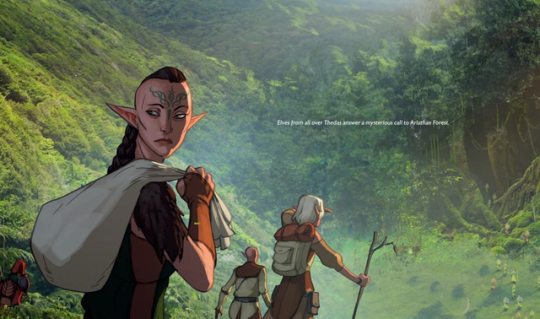
None of this happens in The Veilguard. Not only does Solas lack an army, but their absence isn’t explained or even acknowledged. As a result, Solas remains a passive antagonist until near the end, since the player has no disciples of his to contend with (either physically or ideologically) along the way. It wastes a side of his character that had been foreshadowed in a decade-long cliffhanger – that of a charismatic leader, capable of coordinating a rebellion that could spell disaster for its own followers.
In a Reddit AMA after the latest game’s release, Epler answered where the Agents of Fen’Harel disappeared to:
“Solas’ experience leading the rebellion against the Evanuris turned him against the idea of being a leader. You see it in the memories – the entire experience of being in charge ate at him and, ultimately, convinced him he needed to do this on his own. And his own motivations were very different from the motivations of those who wanted to follow him – he had no real regard for their lives or their goals. So at some point between Trespasser and DATV, he severed that connection with his ‘followers’ and went back to being a lone wolf. There are Dalish clans who are sympathetic to his goals, but even there, there’s an understanding that he’s too dangerous to have a more formal connection with, and that he will, ultimately, sacrifice them to his own ends if necessary.”
I find this explanation unsatisfying, not the least bit because the narrative offers next to nothing to imply this. The disappearance of Solas’s agents represents my biggest bugbear with the game, depriving it of the full potential of its highly anticipated antagonist in favor of the more generically villainous Evanuris. Moreover, this omission fits into the aggravating blueprint for The Veilguard’s inoffensive direction. The motivations, emotions, and backgrounds of the Agents of Fen’Harel would be sympathetic, and therefore might problematize the otherwise cut-and-dry conflicts. Epler seemed concerned that audiences might think Solas was “a little too sympathetic in his goals,” according to an interview with GamesRadar+.
But that’s the thing: sympathy isn’t endorsement, and portrayal of sympathetic characters isn’t endorsement either. But neither does that invalidate the emotions and experiences that generate that sympathy, even if the character’s actions ultimately turn toward evil. I’ve noticed a trend (especially in symptomatic criticism, which I generally dislike5) to view art as propaganda, and to evaluate it from a moralizing, top-down perspective. Antagonists with complex or understandable motivations (in this case, revolutionary villains) are often judged by this framework as tools for stories wishing to champion the status quo. Common arguments that I’ve seen imply that the relatability that we often find in villains is not a strength of the writing, but a devilish trick of ideology by which writers can reinforce conservative doctrine, to scold us away from certain beliefs. Any decent writer knows this isn’t the case, and that people don’t write morally or emotionally complex antagonists for didactic purposes. Instead, characters such as these embody the anxieties of their creators – the fear of losing yourself to your passions, the fear of going about things the wrong way, the fear of sacrificing too much to achieve your desired ends. The concepts and feelings that compel these characters remain authentic to the writer’s heart and the connection they established with the audience.
Art isn’t propaganda. To read it as such reduces it and promotes intellectual dishonesty and foolhardy myopia. Stories are irreducible (otherwise, we would not waste our time with them), and so I believe interpretations should be formed from the bottom-up, rooted in the text as much as possible. The “message” cannot be imposed from the top-down, but symptomatic readings, in their focus on tropes and cultural context, frequently condemn without a trial. Hindering your story in order to future-proof it for the sake of optics is a safeguard against this, and one that leads to bad stories. Artists should have confidence that their text will hold its ground on its own. To quote Ursula K. Le Guin’s essay “A Message about Messages”:
“The complex meanings of a serious story or novel can be understood only by participation in the language of the story itself. To translate them into a message or reduce them to a sermon distorts, betrays, and destroys them… Any reduction of that language into intellectual messages is radically, destructively incomplete.” (67-68)
BioWare’s doctrine of passive writing violates this wisdom by surrendering to their fear of (bad) criticism. The Veilguard lacks punch, stakes, and empathy and becomes incongruous with its established lore because it’s not willing to take risks that might alienate or upset players. They’re more concerned with making sure their work is inoffensive than they are with conveying a moving story.
I believe all of this was inherited from an incestuous feedback loop between a vocal minority of critics, of which I might’ve once counted myself among the blameworthy, and the apprehensiveness of out-of-touch corporate board room decision-making. Dragon Age’s genome mutated, and it slowly lost its teeth.
Over the course of a decade, we bred the Dread Wolf into a Dread Pug.
V. What It Took
The Veilguard’s lack of confidence in itself and lack of faith in its audience contribute to its capitulatory nature. In many respects, it feels like the developers lost their passion for it over the course of the ten year hellish production and just wanted to be done with it. This resulted in a decent game that nonetheless feels divorced from what came before it. It tries to juggle being a soft reboot while also trying to close out the series’s biggest and longest running story arcs, but inevitably fumbles.
Nearly everything done by The Veilguard was handled better by Inquisition. And Inquisition was certainly the more ambitious title. Perhaps more returning characters would have established a sense of continuity between the two, or at least made it less awkward by having them present for the story’s grand finale. For as strong as the endgame is, it could’ve benefited from the presence of slave liberator Fenris, elven history aficionado Merrill, possible Evanuris soul vessel Sera, or Divine Victoria (any of them). The core pillar of Dragon Age is the characters, and The Veilguard’s under-performance (and in some cases, outright dismissal) in that regard sabotages its integrity. Without this to anchor it, the changes to gameplay, visuals, and roleplaying depth become more alienating.
Personally, what do I take away from this? The Veilguard is far from the game I dreamed about for ten years, and not the one that loyal fans deserved either. I’m no stranger to disappointment at this point in my life, and yet this still leaves me with a hollow feeling. Will I still be able to return to Inquisition, a game I truly adore, and see it the same way as before, knowing now where all this is leading? The true cost of The Veilguard, for me, has nothing to do with the price tag: it’s the loss of that perfectly tailored dream, now that the possibilities of the future have shut their gates.
Where do those dreams go? Are they doomed to fester in their lonely, incommunicable agony? Will they be twisted by their enmity, like the blighted dreams of the Titans, and spread their corruption into those important happy memories?
In 2014, I was depressed as fuck, and Dragon Age: Inquisition helped me to see the light and come out of it. In 2024, I was depressed as fuck, and Dragon Age: The Veilguard made me feel nothing. There’s no less favorable comparison in my eyes. It’s disheartening to behold something that once meant so much to me and be greeted with numbness. I have to wonder if that affection will ever return, or if I’ve just grown out of it.
But as I wandered the streets of Minrathous as Rook, I heard a familiar song. It was one of the tavern songs from Inquisition, its nostalgic chords filling me with wistful sentiment. I know, deep down, there’s still something there. Maybe I just need to dig it up. Maybe it’s time to look back…
To be continued…
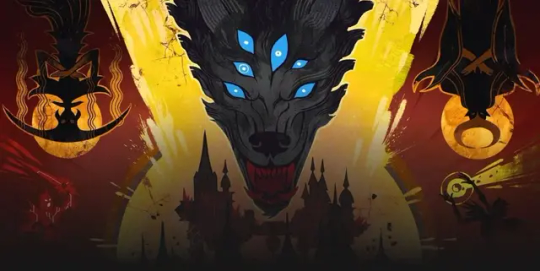
– Hunter Galbraith
Further Reading
Le Guin, Ursula K. “A Message about Messages.” Wonderbook: The Illustrated Guide to Creating Imaginative Fiction, Abrams Image, 2018, pp. 67–68.
Incidentally, this was an anomaly my friends and I pondered over and eventually solved. It turned out to be a former Wienerschnitzel. ↩︎
You could argue that this credit goes more to Inquisition and the previous games for laying the groundwork for said reveals, which were obviously planned out ahead of time, as confirmed by the aforementioned official artbook. Regardless, the payoff satisfied me and gave me proper closure. ↩︎
I’ve been informed that there is a hidden conversation that explains that the Lords of Fortune do, in fact, sell cultural artifacts at times, but only to the rightful owners. This just makes me wonder what they do with the artifacts if the prospective clients can’t pay. Do they shove them back in the ruins and re-arm all the booby traps? ↩︎
I would argue that this does not represent character progression on Isabela’s part, as her (possible, depending on the player’s choices) return of the Tome of Koslun in Dragon Age II was a pragmatic sacrifice she made to save her friends and the city, rather than an acknowledgment of the qunari’s inviolable ownership. In fact, in many continuities, she never returns the Tome at all. ↩︎
I prefer more formalist criticism because it allows the text to lead the dance, not the critique. I think it’s only fair, given that the creators likely spent more effort crafting the piece than I spent consuming it. Symptomatic criticism mandates that the reader consider everything around the text, typically at the text’s expense. In the worst cases, symptomatic critics make their arguments about seemingly everything besides the text in question. ↩︎ Link to article: https://planckstorytime.wordpress.com/2025/01/01/dragon-age-the-veilguard-strangled-by-gentle-hands/
#planckstorytime#writing#analysis#essay#dragon age#datv spoilers#datv rook#dragon age veilguard#veilguard#dragon age inquisition#solas#lace harding#bellara lutare#davrin#elgar'nan#ghilan'nain#neve gallus#taash#lucanis dellamorte#emmerich volkarin#video games#rpg#bioware#dragon age 4#dragon age dreadwolf#da4#tevinter imperium#dorian pavus#inquisitor lavellan#solavellan
291 notes
·
View notes
Text
As much as I love Disco Elysium, I think I was not prepared for Sacred and Terrible Air. Of course, I was expecting to know more about the world of Elysium as a whole, and Robert Kurvitz is a very good writer, but the thesis of the novel (and how it makes its points) flash-banged me.
Disco Elysium this is not, and it wasn’t supposed to be, but I think I can understand better now what the team at ZA/UM was getting at with this specific setting, and these specific narrative angles. Kinda messy, because it’s been a week since I finished it, but here are some things I’d like to highlight:
1. The pedophilia. I surely wasn’t expecting this to be such a central theme of the novel, but a lot of its main points revolve around it. The most interesting use of this, as a narrative device, is how the girlfriend of Jesper basically accuses him of being a pedophile because he cannot relate to the adults around him. He’s still obsessed with a girl he met when he was 13 years old, and fetishizes a scrunchie he stole from her bag two decades ago. Yeah, I guess Jesper, well into his thirties, is still in love with a 13 year old girl. His girlfriend is almost half his age, and they started dating when she was 15 years old and a lingerie model (!). Zigi mentions how pedophilia was a bougie disease, and well… That idea went right into my thought cabinet (I call it “Bougie Babies for Sale).
Still processing it.
Now, let’s go back to the rest of the main characters. With all this in mind, a pedophilic overtone covers their interest in these four missing girls, but Jasper is the only one who acts on it, sort of. Khan remains in a sort of arrested development (he still uses a shirt he had when he was 13), foregoing normal adult relationships, and Tereesz joins the police as an investigator with the idea of still finding them some day (essentially letting these eternally prepubescent girls define his entire existence), leading him to a very dark path. I wonder if the brutality they afford to the “actual” pedophiles in the story (Vidkun Hird and the Linoleum Salesman) comes from the realization that they are not that different?
2. Obviously, though, this fetishization of the Lund sisters is also a fetishization of the past. The novel states it in the first few pages; they disappeared twenty years ago, in a time that most conservative people remember as the “good old days”. Basically their version of the American Fifties. Now, being obsessed with the past is a running theme in both SaTA and DE, but the angle here is different.
I already said it: the past is not remembered, is fetishized with an almost sexual yearning by a lot of the male characters of the book. They want to be consumed by it (and lucky them! It will) and do nothing more than serve it. It reminds me of a poem by Yamil Nardil Sadek, which, translated to the best of my ability, goes like:
She awaits me
sitting on the bed,
wearing leather,
and armed to the teeth,
the Memory.
Yeah, that sums up Sacred and Terrible Air pretty well. Everyone is being consumed by the past, bite by bite, and enjoying it. Vidkun Hird, by the mythologized version of his tribe’s history; Sarjan Ambartsumjan, by a miniature ship model that requires constant, devoted thought or else it will disappear, the three main characters by the memory of that summer with the Lund girls. Even the Linoleum Salesman is being haunted and consumed, of sorts, by his sickness and dementia that only sometimes let him take a peek of the past. Beyond that, there are very few characters that do not spend time being followed by relentless ghosts. Literally, in the case of Zigi. Which brings me to…
3. The Pale. It was a really cool concept in Disco Elysium, and it’s an existential nightmare in Sacred and Terrible Air. It always was, really. But here it lets you take a look into it in a way that’s applicable in real life. The Pale is a metaphor for many things, but actually for a single one: A world where our current Capitalist reality facilitates both apathy and yearning for better days, often idealized in our collective pasts.
My favorite scene, one that was incredibly puzzling but so obvious in retrospect, is a beautiful speech by the ghost (?) of Ignus Nilsen to Zigi. I will just paste it here:
“I said terrible things, yes! I stood on a white horse, in a blizzard, and gave speeches. In the mountains, on the construction site… I swung my sword, with silver sunbeams on the hilt. And all around me fluttered white flags, crests of crowned horns made with silver thread, a pentagon between the prongs of the horns, the branches raised to heaven. Everyone who came here with me became happy, Zigi! Communism is powerful! Believe in Communism, it’s a burst of enthusiasm! I promise! It’s beautiful when you believe in a person, but without it…!”
“Without it, there is nothing.”
“Nothing. It was a blizzard, but it was bright, it was morning. Communism is white, it sparkles! Communism is the morning, it is a jubilation!”
The Pale begins to recede dangerously around the entroponaut.
The fucking Pale recedes with talk of Communism! At first it might appear a little heavy handed (yeah, Communism, by itself, could save the world). But then I got into how Communism could be a solution to the antipathy and chronic nostalgia that sustain Capitalism, and then it hit me. Nilsen, a literal ghost from the past, is talking about a future that could have been. That he wanted to accomplish. That people, probably, can still achieve. The Pale is not eternal, it can be pushed back. Because the Pale seems to subsist on the past, it abhors any talk of the future. A better future. That’s how we solve things, and for a central thesis, is not bad at all.
With that being said, and because I’m just rambling here while pretending I’m working, there are also some things that I just didn’t understand, but maybe it was because of the translation. The original novel is written in a very poetic style, and some of that is still here, but I still need to untangle…
1. The Man. It is said that the day the Lund girls disappeared, they were joined by a mysterious Man that nobody seemed to remember correctly. A character even suspects that she was remembering wrong. Now, the Pale erases people and memories retroactively, so maybe it had something to do with it, but… Who was that? Is there any theory about that Man, or I just missed something? Some scenes and narrations were tough to parse for me (my primary language is not English).
2. Was Malin Lund pregnant? That flash with the fetus was sudden and weird.
3. What was the significance of the three meat piroshkis? They mention that it was unusual that the girls bought them (and if you do the math, you can realize early on that they were not planning to get back home. That purchase didn’t leave them enough money for the bus fare back), but that’s it. Were they for the Man? Also, the narration mentions that Lund girls’ picnic basket contained “the kind of things girls like to eat”, so maybe they were planning to see the boys and bring them the kind of things boys eat? I’m overthinking that? The chapter actually titled “Three Meat Piroshkis” just left me even more confused.
4. I don’t understand how Khan’s pen works at all. The one he brought to the school reunion. That was the part I re-read the most. Anyway, even with that, I loved Sacred and Terrible Air. Definitely one of the most enthralling reads I had, with or without the background of Disco Elysium. I’d still like an official translation that could potentially solve the issues I had, but for now, a Top 10 Book for me.
Go for it now.
401 notes
·
View notes
Text
Their Career Change After the Military
————
COD Men Headcanons
————
König
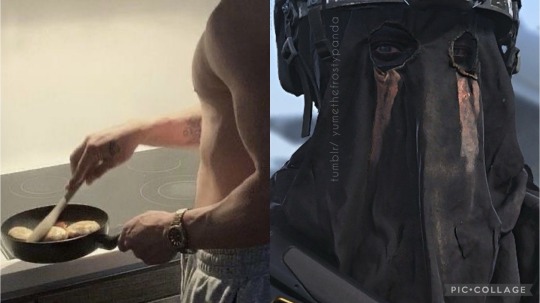
Househusband
He was tired all the time after coming back from the Military so he picked up on being a househusband and doing all the chores around the house while his s/o goes to work
It started out as making lunches for you
Then hand delivering them to you before lunch
He also started to fix things around the house he told you not to call someone for because he could look it up and do it himself free of charge
Hates messes now. He started to develop this thing where he hates messes no matter what it was. It wasn’t OCD, but he hates when he cleans something and thing a few seconds later gets dirty again
Cleans…that’s all he does when he’s bored
Hardly sits, he only sits if he needs a break from whatever he’s doing
————
Ghost

Police officer
He misses how he use to help in the military so picked up an application and filled it out to be an officer
He guards around the royal palace to keep those stupid and annoying tourists in line when touching the royal palaces horses at the gates
His voice starts to slowly become more deeper over the years from telling pedestrians to leave the horses alone
Of course they listened to man holding a gun, not like he was ever going to use it, it was just to make myself look scary
Honestly hates working in the cold or rain but does it for his job
Gets shy when his s/o comes around to have lunch with him. He waits till he is relieved from duty to go eat with his partner
He loves seeing his s/o come around in cute outfits he knows that he will fold to
————
Price
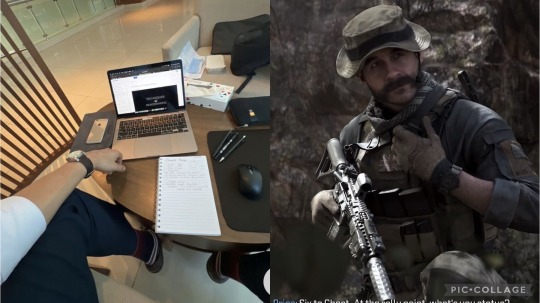
Office manager
Loves wearing the suits to get a rouse from his s/o
Loves it when his s/o visits him in the office just to drop something off he forgot at home or just to have lunch together
Got the job because he knew some people that could help get this job after he retired from the military
His desk at his work his boring with a small framed picture of his s/o sitting next to his pc
He doesn’t go to the office parties, he’d rather stay home with his s/o and not have to worry about them, he deals with them long enough at work he doesn’t need to be there for after hours
Doesn’t have a “work wife/husband” because he’s married
————
Soap

Mechanic
Took the job because he liked fixing cars
He was a personal mechanic to a race car driver for some time but quit to open his own shop
Makes a lot
He fixes his s/o car for free
Has his personal project with a Porsche 911 GT3 that he does drag races in
His personal car has nothing special but maybe a loud exhaust pipe
Takes time in his work, if it’s something bad like a busted engine he’s going to take his time not rush the process just to get the car out of his shop. If it takes a month it’s going to take a month
————
Alejandro
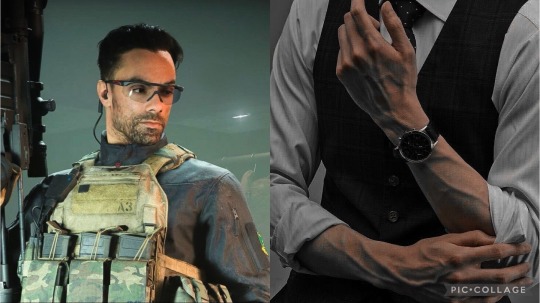
Stock Broker
He didn’t want the job at first knowing it’s probably boring but when his friend bragged about the almost 3 million dollars sitting in his pocket
Took the job and makes close to 5 million
It’s a love hate relationship type of job. Hates it because of the people he works with, loves it because he gets to spend his money on his s/o
His s/o meets him for lunch dates
Doesn’t go to work parties
He does pull the late night hours coming close to 3 in the morning but doesn’t have to go to work till 11
He likes trying on new suits he bought to show them off to his s/o to see their opinion on his suits
Alejandro’s desk is full of random papers from other co-workers and from customers
————
Gaz
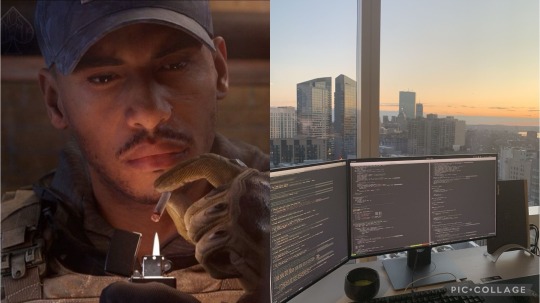
Works from home
He starts working from home. He was able to find a job he could work from home from and can go in once a month
Gaz was able to find a job as a I.T. Guy, when Gaz was younger he messed around with coding and helping people with new technology, so he figured this would be good for him
He’s stuck in front of a computer 6 hours a day, but then the rest of his time is with his partner
He loves the view he has from his home office being able to overlook the city as he worked from home and his s/o bring him lunch and snacks every so often
Gaz loves the idea that he can wear whatever he wants to his job and no one will know
Gaz sometimes loses his mind when he has to deal with an elderly who could barely remember their password, there has been many times Gaz would have to remind them that he doesn’t know their passwords
————
Alex

Picks up the hobby of gardening
He lowkey didn’t think he’d enjoy gardening
He thought it was boring till he grew his first strawberry bush with success and no rotten fruit
He started to make the garden bigger and then made a greenhouse for flowers and succulents
Started to sell fruit and vegetables at the local farmers market
Doesn’t make a whole lot and that’s fine with him. What he does make he spends on his garden or his s/o
His s/o also jumps in to help him with the garden
Starts asking his ol’ buddies if they were interested in some of the stuff he grew
The next thing now is he wants chickens to sell their eggs
#cod modern warfare#cod mw2#cod mwii#cod x reader#fandom#fanfic#call of duty#mw2#cod#konig call of duty#ghost call of duty#captain price cod#soap call of duty#alejandro cod#gaz cod#alex keller cod
306 notes
·
View notes
Text

Steve/Tony dating sim sign-up info & FAQ
If you haven't heard the news, there's going to be a free Steve/Tony multiverse dating game! (If you have heard the news, bear with us—this is a new announcement because we've updated a few things). Follow us on Tumblr to get the latest updates on development and launch and/or hang out with us on Discord as we make the game!
About the game
The Steve/Tony multiverse dating sim (name TBD) will be a visual novel-style game that’s mostly dialogue with some simple minigames thrown in. You'll play as a Steve or Tony from one of the many universes that exist who’s thrown into a rift in reality with a bunch of other Steves and Tonys. You’ll get to decide whom to work with to invent, fight, flirt, and date your way back home.
Who we are
We're a team of passionate Steve/Tony fans who have come together to write and illustrate the dating game of our dreams, coded by the wonderfully talented @v-thinks-on. You can read more about us here.
How this works
In order to make the game, we need writers for the player characters (characters you can choose to play the game as) and love interest characters (characters the player can interact with and romance), artists for the visuals, and more. Here's a brief summary of the process:
Love interest writers script a story arc for the player character to go on if the player selects that writer’s love interest character to date
Player character writers fill in the dialogue for their characters in the love interest scripts
Artists create the visuals of the game, including character art, backgrounds, and more, based on the scripts
For a more detailed overview of the game-making process and each team role, please refer to our FAQ.
How to apply to the team
Please email [email protected] with the following information:
Confirmation that you’re over 18 (just let us know you’re 18+; we’re not asking you to share personal info)
The best way(s) to contact you
And depending on which role you want to apply for, please include:
Writers (currently taking sign-ups for love interest writers only; we'll announce when we're open for player writer applications)
What character you’d like to write for (universe and name). If you have multiple, please order by preference. To help you choose, here is a list of universes we have writers for and available universes (if you want a universe not on this list, that means it's available)!
Do you want to write alone or with a partner(s)?
A writing sample focusing on Steve and Tony (link, attachment, or text in the email body), ideally with a good amount of dialogue. This doesn’t have to be a complete piece with a beginning, middle, and end; it's more to get a sense of your style and understanding of characterization, so all we ask is that it’s easy to follow. This can be something you’ve already written or you can write something new for this application. We don't have a minimum word requirement; if we need more from you, we'll let you know
Artists
We'll be sharing an interest check either the first or second week of April, so if you're an artist, watch this space! If you're not on Tumblr much and you're afraid of missing out, contact us and we'll add you to our mailing list
Project managers
Please state if you have any experience running events, projects, or games (either fandom or non-fandom is fine) and any skills you believe will be handy, e.g., you're amazing with Google Sheets, you're a scheduling and coordinating whiz, you can wrangle large groups
Availability: 1. Do you use Discord? and 2. How much time do you have to dedicate to being a project mod? While we don't have something going on every week and it's fine if you're busy sometimes, we need a go-getter who is easy to reach on Discord and can make sure the project progresses at a good clip
People with other skills
If you have any other skills that you think will help make the game better (for example, you’re a musician and you’d love to produce music for the game or you're a coder who'd love to help @v-thinks-on), get into contact with us.
Contact us
Please don’t hesitate to contact us if you have any questions (don't forget our FAQ!). You can reach us by email, Discord, Tumblr Messenger, askbox, Twitter DM, or Bluesky DM. Thank you!
#stevetony#steve/tony#stony#superhusbands#steve rogers#tony stark#fandom games#dating sim#stevetonydatingsim
50 notes
·
View notes
Text
President Trump, my President, your President is making big 2A moves. "Sec. 2. Plan of Action. (a) Within 30 days of the date of this order, the Attorney General shall examine all orders, regulations, guidance, plans, international agreements, and other actions of executive departments and agencies (agencies) to assess any ongoing infringements of the Second Amendment rights of our citizens, and present a proposed plan of action to the President, through the Domestic Policy Advisor, to protect the Second Amendment rights of all Americans. (b) In developing such proposed plan of action, the Attorney General shall review, at a minimum: (i) All Presidential and agencies’ actions from January 2021 through January 2025 that purport to promote safety but may have impinged on the Second Amendment rights of law-abiding citizens; (ii) Rules promulgated by the Department of Justice, including by the Bureau of Alcohol, Tobacco, Firearms, and Explosives, from January 2021 through January 2025 pertaining to firearms and/or Federal firearms licensees; (iii) Agencies’ plans, orders, and actions regarding the so-called “enhanced regulatory enforcement policy” pertaining to firearms and/or Federal firearms licensees; (iv) Reports and related documents issued by the White House Office of Gun Violence Prevention; (v) The positions taken by the United States in any and all ongoing and potential litigation that affects or could affect the ability of Americans to exercise their Second Amendment rights; (vi) Agencies’ classifications of firearms and ammunition; and (vii) The processing of applications to make, manufacture, transfer, or export firearms."
39 notes
·
View notes
Text
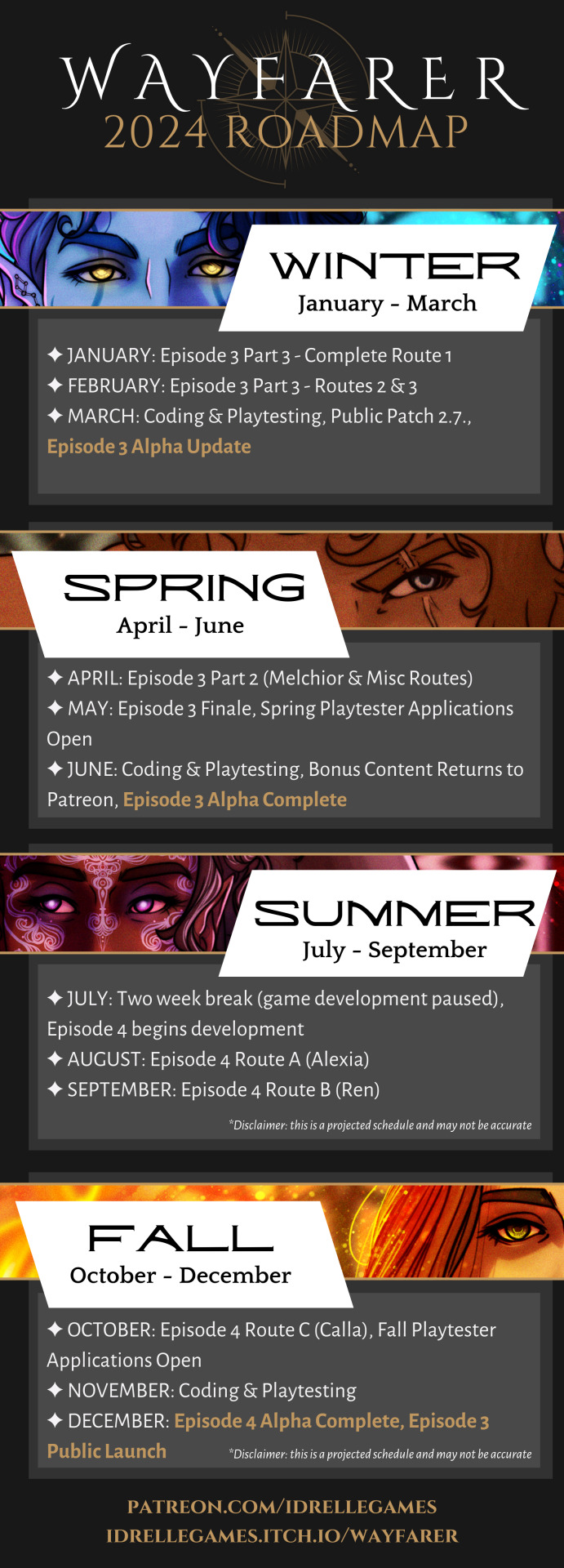
Wayfarer 2024 Roadmap
It’s the start of a new year and I’m excited to announce my plans for Wayfarer’s development.
The primary focus for 2024 is finishing Episode 3 and starting Episode 4. My goal has always been to get the alpha build to the point where it is one episode ahead of the public build, and forcing my way through this period has been very difficult. Episode 3 has turned into a more challenging endeavour than I anticipated due to its sheer size and complexity. I did not intend to take over a year to finish it, but if I’ve learned anything from the creative process it’s that it is unpredictable and things never go according to plan.
The 2024 roadmap is for an idealized scenario. I am hoping I have given myself enough wiggle room should things go off-course. With that in mind, the plan for the last 6 months of the years is an estimate and will likely change. Regardless, the goal remains the same: finish Episode 3, finish Episode 4, and release Episode 3 publicly.
Winter • January to March
This quarter will be focused on finishing the next stages of Episode 3. Episode 3 is divided into 4 parts:
Part 1: the beginning of the episode, following the routes that occur if the player ends Episode 2 with Aeran or Veyer. This part is finished and was added to the alpha build in May 2023. It includes over 300,000 words of playable content.
Part 2: the beginning of the episode, following the routes that occur if the player ends Episode 2 with Melchior, alone, or drunk. This part was skipped over and will be returned to at a later date.
Part 3: the middle of the episode, split into three different routes that eventually bottleneck at a specific point. This part is currently in-progress, with Route 1 nearing completion.
Part 4: the episode finale
January and February will be devoted to writing Episode 3 Part 3, which includes finishing Route 1 and completing Routes 2 and 3. In March, I will code that material and playtest it. Once it has been thoroughly playtested, it will be added to the alpha build (playable on my Patreon).
March will also see an update to the public build. Patch 2.7. will not add any new content, but it will patch reported bugs in Episodes 1 and 2 and update some quality of life issues.
Spring • April to June
This quarter will be focused on writing Episode 3 Part 2, the Episode 3 finale, and coding and playtesting all of the remaining material. Should all go according to plan, the Episode 3 alpha will be finished at the end of June. All routes will be playable for members of my Patreon.
The next round of playtester applications will open in May. Playtesters are volunteers who play the alpha build in search of bugs, continuity errors, and typos. They get first access to new content, and updates and patches before anyone else does. Because Wayfarer’s gameplay includes hundreds of choices and many, many variations that build on each other, playing multiple times and checking different options is essential for testing to ensure each area of the game functions as intended.
In June bonus content (short stories, writing tutorials, worldbuilding and lore posts, etc) will return to my Patreon. It is currently on a break, but the backlog of extras and specials are available to members of the Apprentice tier.
Summer • July to September
If the Episode 3 alpha is finished on time, this quarter will start the development of Episode 4. Episode 4 is divided into three separate routes that have no-crossover and each feature a main companion. Alexia’s (Route A) will be worked on in August and Ren’s (Route B) will be worked on in September.
This is an estimated timeline and is subject to change.
Fall • October to December
The last quarter will see the end of Episode 4’s development. This includes Calla’s route (Route C) and additional coding and playtesting. A second round of playtester applications will open in October. If all goes well, December will see the release of the Episode 4 alpha on Patreon and Episode 3 will launch on the public build.
This is an estimated timeline and is subject to change.
228 notes
·
View notes
Text
BIG ANNOUNCEMENT! EXCITING NEWS!
Hello my dear friends and siblings! I am so terribly sorry for my absence but I have been working on some big things and I have some VERY exciting news.
As some of you may know, I have been working with an affirming and inclusive parish, Saint Thekla Independent Orthodox Church. The priest and I have been working together for several months now and share a vision of building an inclusive and affirming community here in Indiana. To that end:
ANNOUNCEMENT ONE: I have been granted permission to found an offspring community under the umbrella of Saint Thekla. I am proud to announce the official opening of Holy Protection Orthodox Christian Community! Although we are mostly online currently, Mother Thekla and I will be working diligently to establish in-person meetings locally. That said, our online ministry will continue and I invite you all to participate. Our virtual Coffee Hour is especially great and not to be missed! (links below). Eventually we hope, by the grace of God, to grow into a fully functioning parish with a priest serving weekly Divine Liturgy. Which brings me to my second announcement:
ANNOUNCEMENT TWO: I have been granted permission to begin the process of reading for Holy Orders with the goal of ordination to the priesthood. I will submit my official application later this week but my spiritual director is confident given my ministry experience (and my brief time in Anglican seminary before my transition) my application will be welcomed and granted quickly. This process will take a couple of years. but I'm very excited to finally complete my journey to the priesthood after so many years. Glory to God for all things!
I will try to post here more regularly and consider this blog as an extension of the online ministry of Holy Protection. I invite you all to please participate in our online community and for those of you who live in my neck of the woods, I hope to invite you to in-person meetings soon! In the meantime, please like the Facebook page and join the Facebook group to stay up to date on our development!
Facebook page: https://www.facebook.com/profile.php?id=61563480251752
Facebook group: https://www.facebook.com/share/g/ecxTi3GAJ8iZiAa6/
Youtube channel (in development): https://www.youtube.com/@AffirmingOrthodoxy

#orthodoxy#queer christian#orthodox christianity#orthodox church#trans christian#faithfullylgbtq#orthodoxleftist#inclusiveorthodoxy#thisglassdarkly#gay christian#holyprotection#hoosier orthodoxy#appalachian orthodocy#queer appalachia#orthodox appalachia#affirming orthodoxy
26 notes
·
View notes
Text

benjamin "ben" amaro is a neutral evil agent of pandora selected for their elaborate scheme as a con-man and illusionist that made them an ideal candidate and underwent the top-secret mutation process. to the rest of the world, the thirty two years old originally from london is deceased or missing. however, in atlantis, they are now known as mirage of lust division after developing the ability to create and manipulate illusions and hallucinations to alter the perceptions of others . the agent has been with pandora for three years and is trusted for being enthusiastic & clever, but once reprimanded for being imprudent & superficial.
BASIC INFORMATION.
NAME benjamin “ben” amaro , AGE & DATE OF BIRTH , thirty two & august 15th , BIRTH PLACE london, england , GENDER & PRONOUNS cis-male & he/him , SEXUAL & ROMANTIC ORIENTATION bisexual & biromantic , PRIOR OCCUPATION con-man & street illusionist , HEIGHT 6' (183 cm) , WEIGHT 160 lbs (73 kg)
PROJECT PANDORA.
DIVISION lust , CALLSIGN mirage , TIME IN PANDORA three years , SPECIAL ABILITY illusion manipulation , APPLICATIONS benjamin is able to create sensory experiences without any basis in reality (hallucinations) and alter the way targets perceive others (illusions) to create diversion or tricking targets into harming themselves or others. his ability spans from harmless illusions, like masking his presence or making small objects appear different that it looks like in reality, but it could span to placing the targets in a harmful, life-or-death situation that forces them to take drastic measures or reliving their worst moments in life , LIMITATIONS casting bigger illusions requires utmost focus and minimum disturbance that it could leave benjamin susceptible to attacks. for stronger and more personal illusions & hallucinations, benjamin needs to be within a close distance of his targets and requires brief eye contact with the targets , EXPERTISE seduction, culture & politics, & deception, PROFICIENT persuasion, stealth & infiltration, athletics, sleight of hand, & performance, SUBSTANDARD close combat mastery & perception
NSFW.
SEXUAL POSITION verse , SEXUAL TEMPERAMENT submissive , YES public sex, rough sex, face-fucking, biting, marking, choking , NO scat, vomit, watersports, blood play, (ask if unsure)
8 notes
·
View notes
Text
May 2024 Check In

Hello, all!
Thank you for keeping up with our development! Let's jump right in on what we've been working on!
We have received over 400 applications for Alpha testing. We are currently on track for a June start date, and we’ll divulge the gritty details of where we're at in development at the end of this update.
However, we had mentioned a fauna present going to chosen volunteers in exchange for the requested labor.
We wanted to give everyone a peak! Introducing…
Nephrune

Design and illustration by Hydde
Researchers are not certain if this legendary creature truly exists or if it is a fable-born myth, but folklore says the Nephrune slumbers underground among the earthen bounties. As the only natural creature made entirely of crystalline inorganics, legend has it that this mighty beast is the mother of all magics in Mewmoia. Its awakening would spell disaster.
It is worth mentioning once again that Alpha volunteering will not be the only way to obtain a Nephrune. We plan to have this fauna setup as an exclusive incentive for bug hunting and reporting (a bug bounty) in the future. We do not intend to permanently retire the beast, however it will be rare.
New Icons

Turmeric, Ink Jar, Lotus, Basil, Rosemary, Sage, and Oregano illustrated by Tybaxel
New Accessories
We have continued accessory illustration! Last month, we previewed the fourth set of our catalog:
The Woolen set!
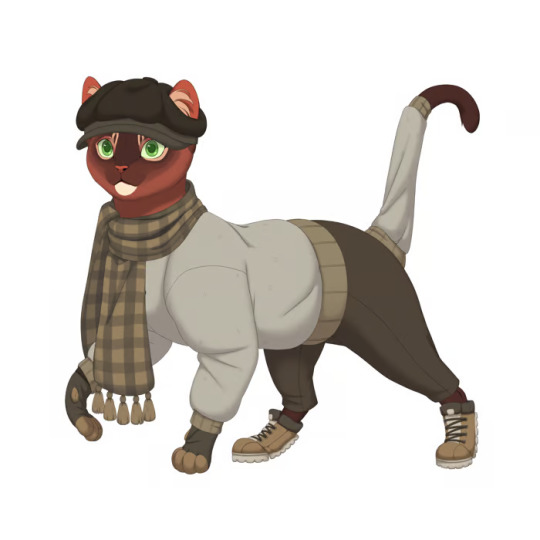
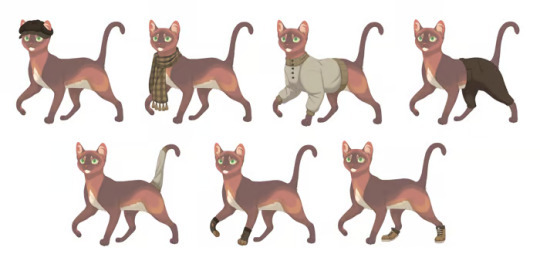
Illustration by Remmie
Alongside, we have continued working on backer accessories!
It has been our goal to develop several points of synergy in the aesthetics of our accessories. This includes backer accessories. As it turns out, several backer accessories worked together well enough to commit to one more set.
The Regal set!
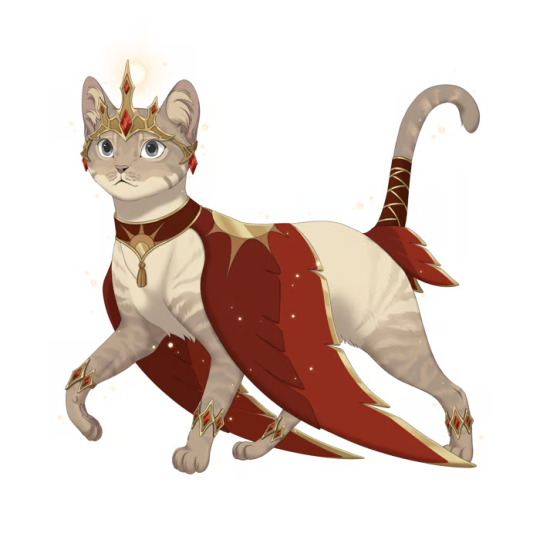
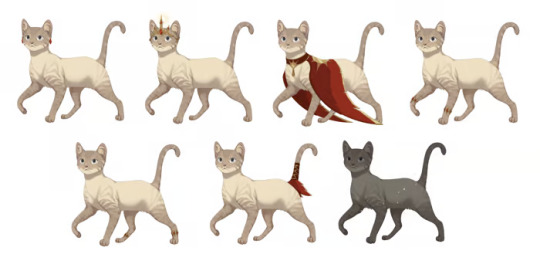
Illustration by Hydde
The Regal Crown and the Pheonix Mantle were both concepted and sponsored by SolsticeStar and Ralsha respectively. We've added to their concepts to create a versatile outfit!
We also have further renders of the Kickstarter item:
Necromantic Cloak
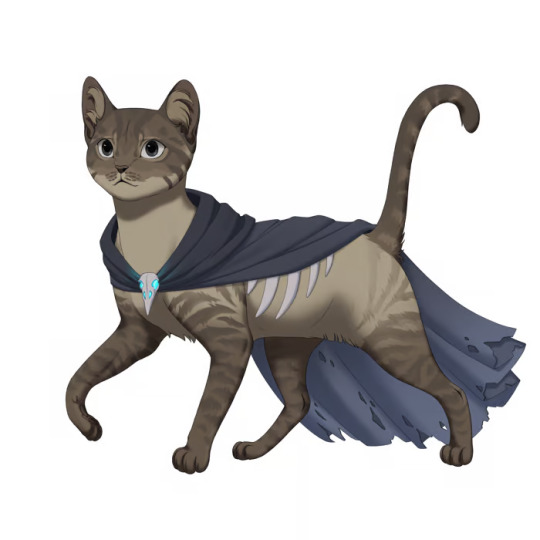
Illustration by Hydde
Dynamic Accessorizing
We wanted to take a moment to briefly talk about the dynamic layering we’ve implemented in accessories!
We’ve implemented a system which allows the back of accessories to layer behind accessories they're on top of.
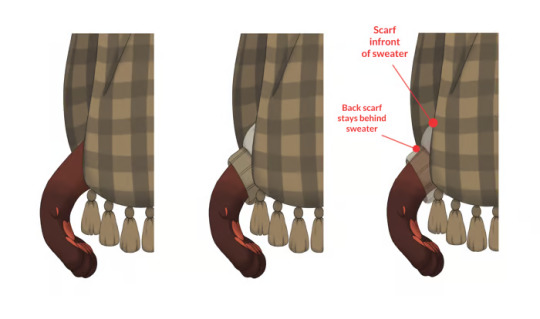
What this means: Socks will layer over the back hem of boots while remaining under the boot, items with back capes like the Necromantic Cloak can have poofy pants under them without clipping, wigs can be worn under hats or hoods without clipping the back brim, and the list goes on!
It's a small QoL addition, but it makes layered outfits much easier to construct!
Sol Site Theme
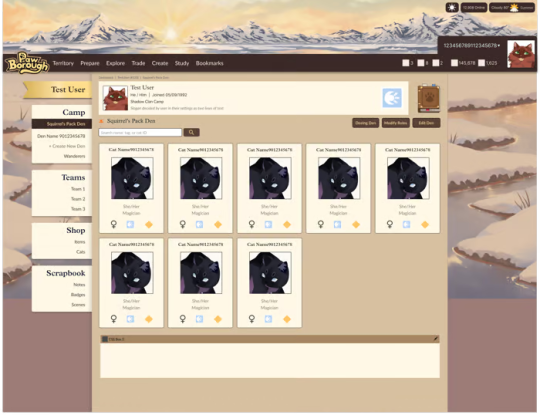
Daily Duties
Next, take a look at our designs for play of the Territory Grounds section!
NOTE: These are early concept mockups, and still need significant tweaking before final approval!
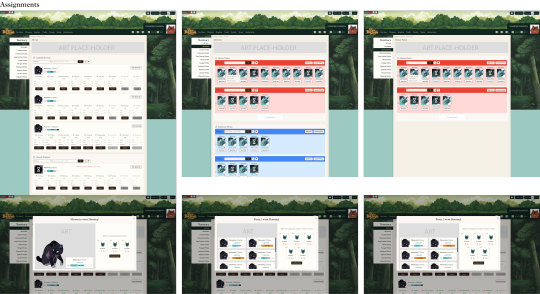
Performing a cat’s daily duty in your Territory is a consistent way for your camp to get item resources.
Cats can participate in a number of different daily activities in order to gain different items. Hunting will gain items like the Common Mouse, while fishing will gain items like the Red Snapper.
How well your cat does at a duty will depend on their statistics! In addition to playing the Guild, a cat which frequently does activities will raise their statistics.
However, we wanted to make this process customizable and streamlined.
Which is why we designed territory parties! You can create and save a party of cats with a certain territory activity, then send all the party cats on their daily duties at once.
This way, if you really need meat items, you can choose to send all your cats hunting without painstakingly clicking several times. You can curate a consistent daily gain pool while at any time choosing to deviate from it!
Parties are also versatile. Even if a cat has already been sent on a different duty, you may still send the party without that cat.
This system will need testing to find any kinks or pain points, but our goal is to reduce the amount of clicking while still requiring some resource management strategy from the user!
Map of Mewmoia
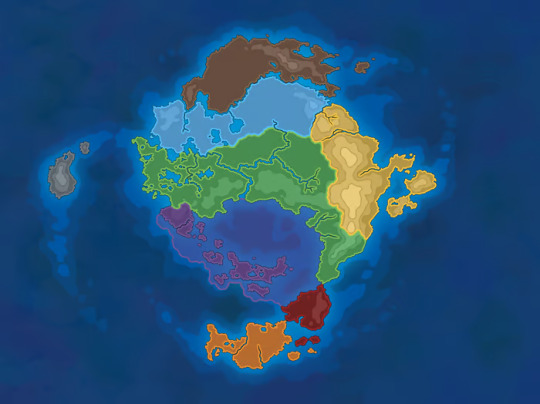
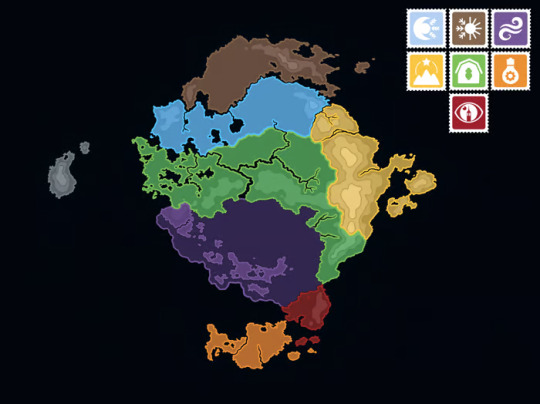
Above is the political map which presents Borough boundaries, however we also present a climate map, which outlines the conditions of each location:
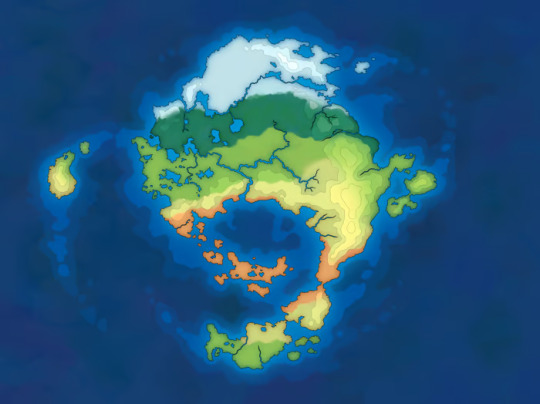
Map illustration by Hydde
Lore is finally something we can take some time to focus on.
Refreshing and lengthening the writing found on our original prototype website is now being done. We have mockups for a better, interactive lore page!
However, we must stress that this page does not take precedent over the game itself, so while we can communicate that its on our radar, we can't promise it before delivering on MVP mechanics.
Speaking of lore…
The Metropolis Logo


Illustration edits by Tybaxel The moon has now been better placed to represent the eyeshine, and a World Spire has been made front and center. This tower is sculpted to resemble a cat’s pupil, thus better fitting in with the other simplistic yet intentional visuals.
The Metropolis will have its visuals updated on our demo website during our next improvement push!
Development Update
So where are we on development?
Well, recently we wrapped up Alpha combat development. This includes movement, conditions, tile generation, NPC behaviors, item use, and combat abilities.
Introducing Errands
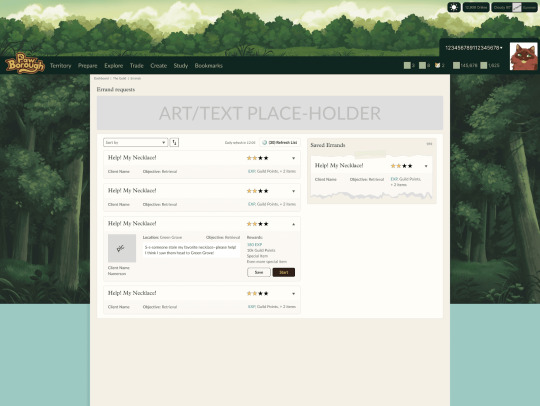
Take a peak at Errands, which is the Alpha version of the multiplayer Missions.
Errands are smaller, short-term jobs that only one cat may go on. They take 1-3 minutes (VS. Missions taking 10-20 minutes) and will similarly have different objectives to accomplish.
Going on an errand will still gain you experience, items, currency, and help you raise the rank of your Team, but they are tailored towards casual play. While missions will be available for longer play-sessions, errands are for when you want to do something smaller!
Here you can see the method of browsing errands. Current errands can be refreshed via clearing all of them, re-checking the next day, or a premium instant refresh. Errands can also be clipped and saved for later if you don't want to start them immediately, but see one you're intrigued by!
Dev Progress Check
Going forward, the big things we are currently working on, in order:
Daily Duties
Forums
Item Integration
Player to player trade; markets and currency
Dashboard Functionality
Cooking / Crafting Functionality
After which, all further features will be additional buffs to the loop and QoL features. Things such as a player and Team notebook to post and feature journal entries, aesthetic buffs to the scene builder (color tints on items, shadow tints, etc.), mobile QoL, the achievement badge system, a tagging system, and integrating multiplayer combat functionality.
These additions are all things we hope to prioritize adding over the lifespan of our beta!
Wahoo! Lots of good things! Everyone on the team is buzzing with excitement over how close we're getting to something fully playable. Thank you for being along for the ride!
To Summarize: We showed the Nephrune, new accessory sets and accessory dynamics, the Sol site theme, Territory Ground play, the Site Map, a new Metropolis logo, Errand setup, and the check-in for where we are in mechanic development.
What to expect next month: Alpha functionality, further asset renderings, potential recolors, potential Moontail update!
#kickstarter update#paw borough#virtual pet#indie game#pet site#pawborough#art update#development update
53 notes
·
View notes
Text
the academy | intro
------------------------------------------------------------------------------
date: march 11, 2025. idk how good this will look but i'm attempting.
------------------------------------------------------------------------------



✧˖*°࿐ The Academy
༊*·˚ Veltrius Lumos Academy (commonly known as Veltrius Academy) is a prestigious private co-ed boarding school located in starmor city, stellis province, haiqin. established in 1895 by the renowned educator and philanthropist Vretiel Daliz, the academy has built a reputation for excellence in both academics and the arts. the institution is known for its rigorous curriculum, innovative teaching methods, and commitment to holistic education, drawing students from all over Haiqin and beyond.
༊ the school is distinguished by its rich cultural heritage, selective admissions process, and emphasis on creative exploration alongside academic rigor. Veltrius Lumos Academy operates under the Haidyan Association of Independent Schools (HAIS) and is a member of several international academic alliances.



✧˖*°࿐General Information
༊ motto: Somnia Crescere Cum Fortitudine(Haiqin Language)
༊ motto (english translation): Grow Dreams With Strength
✧ 𓂃 › the motto reflects the school’s mission to nurture students' ambitions, talents, and resilience. the phrase emphasizes not only academic and artistic success but also personal growth, strength in adversity, and the courage to pursue one’s dreams.
✧ 𓂃 › Veltrius Academy fosters an inclusive and competitive environment where students are encouraged to develop a strong sense of integrity, perseverance, and leadership. faculty members strive to create an atmosphere where students can challenge themselves intellectually, artistically, and athletically while maintaining a sense of community and ethical responsibility.
༊ type: private boarding academy
༊ established: 1895 (128 years ago)
༊ founder: Vretiel Daliz
༊ accreditation: HAIS (Haiqin Association of Independent Schools)
*ೃ༄Governance & Administration
༊ chancellor: Aris Kisea
༊ vice-chancellor: Nira Astereas
༊ academic staff: approximately 120 faculty members
✧ 𓂃 › the Chancellor, Aris Kisea, oversees all administrative, financial, and academic operations of the academy, ensuring that Veltrius Lumos remains at the forefront of educational excellence. the Vice-Chancellor, Nira Astereas, works closely with department heads to maintain high academic standards and uphold the school’s artistic and leadership-focused mission.
✧ 𓂃 › the academy employs over 120 faculty members, many of whom are renowned educators, researchers, and professionals in their respective fields. the faculty is carefully selected to provide exceptional instruction in both core academics and specialized arts disciplines.
*ೃ༄Student Body & Enrollment
༊ total enrollment: 638 students (Fall Year)
༊ grade levels: 10th – 12th
༊ average class size: 15–20 students per class
༊ student-to-faculty ratio: approximately 5:1
✧ 𓂃 › Veltrius Lumos Academy maintains a highly selective admissions process, evaluating applicants based on academic performance, artistic talent, leadership potential, and character. the academy attracts students from all over Haiqin, with a diverse student body representing various regions and cultural backgrounds.
*ೃ༄Campus
༊ location: Starmor City, Stellis Province, Haiqin
༊ campus size: (To Be Expanded)
༊ facilities:
✧ 𓂃 › academic buildings with state-of-the-art classrooms and laboratories
✧ 𓂃 › performing Arts centers for music, theater, and dance
✧ 𓂃 › fine arts studios for visual arts, sculpture, and digital design
✧ 𓂃 › library & research center housing an extensive collection of books and digital resources
✧ 𓂃 › student dormitories with modern living arrangements
✧ 𓂃 › dining hall & cafeteria serving balanced meals
✧ 𓂃 › sports complex with training facilities for athletic teams
✧ 𓂃 › technology & innovation labs for research and creative development
✧ 𓂃 › green spaces & gardens to promote wellness and relaxation
༊ situated in Starmor City, the campus offers a blend of historic architecture and modern facilities. the school grounds are designed to foster creativity, collaboration, and academic rigor, providing students with an immersive educational environment.
*ೃ༄Academics & Affiliations
༊ accreditation: HAIS (Haiqin Association of Independent Schools)
༊ academic affiliations: (To Be Added Later)
༊ endowment: $100,000 per year
✧ 𓂃 › Veltrius Lumos Academy follows a rigorous academic curriculum that integrates traditional education with specialized training in the arts. the school has been accredited by the Haiqin Association of Independent Schools (HAIS) and maintains affiliations with leading educational institutions for exchange programs, guest lectures, and advanced research opportunities.
*ೃ༄Extracurriculars & Athletics
༊ sporting affiliations: HASA (Haiqin Academia Sports Association)
༊ team name: Veltrius Lions
༊ mascot: Anthe the Lioness
✧ 𓂃 › despite being primarily an arts-focused institution, Veltrius Lumos Academy has a well-respected athletics program, competing in the Haiqin Academia Sports Association (HASA). the Veltrius Lions, named after the academy’s symbol of strength and resilience, participate in a variety of competitive sports, including fencing, swimming, archery, and track & field. the school also offers intramural sports for students who prefer recreational athletics.
*ೃ༄Student Media & Publications
༊ newspaper: Lumos News
༊ yearbook: (To Be Confirmed)
༊ student radio & podcasting club: VLA Broadcasts
✧ 𓂃 › the academy encourages student journalism and media production, with Lumos News serving as the official school newspaper, covering topics from campus events and student achievements to editorials and national news. additionally, students have opportunities to participate in broadcast journalism, producing radio shows and podcasts under VLA Broadcasts.
*ೃ༄School Identity & Branding
༊ school colors: purple, navy, medium grey
༊ school emblem: n/a (for rn)
༊ official website: veltriuslumosacademy.ec
✧ 𓂃 › the official colors of Veltrius Lumos Academy—purple, navy, and medium grey—symbolize wisdom, ambition, and resilience. the academy’s branding reflects its legacy of excellence, fostering a sense of pride and belonging among students, faculty, and alumni.



✧˖*°࿐History
༊ from its humble beginnings in 1895 to its status as a world-class institution, Veltrius Lumos Academy has endured war, societal change, and rapid modernization to remain Haiqin’s premier academy for education and the arts. its influence continues to grow, ensuring that the academy’s graduates will shape the world for generations to come.
*ೃ༄The Early Academy
༊ Veltrius Lumos Academy was founded in 1895 by visionary educator and philanthropist Vretiel Daliz, a renowned patron of the arts and progressive education. daliz envisioned an institution where intellectual rigor and artistic excellence could coexist, allowing students to develop their creativity alongside a strong academic foundation.
༊ at the time of its founding, Starmor City was emerging as a cultural hub in Stellis Province, making it the ideal location for an academy dedicated to higher education and the arts. the school started as a small conservatory-style institution, focusing primarily on fine arts, classical literature, and philosophy. the initial student body consisted of just 50 students, hand-selected based on their academic and artistic potential.
✧ 𓂃 › the original campus was a single stone building with a central auditorium that served as both a lecture hall and a performance space.
✧ 𓂃 › the school’s first curriculum revolved around visual arts, music composition, and classical studies, with a strong emphasis on rhetoric and literature.
✧ 𓂃 › notable early figures included scholars and artists who shaped Veltrius into an elite institution, such as poet Seraphine Marlois and pianist Edrian Valcora.
༊ daliz’s philosophy of “grow dreams with strength” became the academy’s official motto, a guiding principle that shaped its future expansion.
*ೃ༄1920s – 1930s: Academic Diversification
༊ the academy broadened its curriculum to include sciences, mathematics, and foreign languages, ensuring students received a well-rounded education while maintaining its focus on the arts.
༊ new buildings were constructed, including dormitories, an art studio wing, and a science laboratory, expanding the school’s facilities to accommodate over 300 students by 1935.
༊ the introduction of theatrical and cinematic studies in the 1930s made Veltrius a leader in performing arts education.
*ೃ༄1940s – 1950s: Rising Prestige and Global Influence
༊ during World War II, Veltrius remained operational but adapted to wartime challenges, incorporating subjects such as international relations and historical studies.
༊ post-war, the academy saw increased international interest, with students from other provinces and countries seeking admission.
༊ by the 1950s, Veltrius was officially recognized as one of Haiqin’s top academic institutions, known for producing leaders in the arts, science, and diplomacy.
at this point, Veltrius Lumos Academy had established itself as not only a prestigious academic institution but also a cultural landmark, shaping the intellectual and artistic landscape of Haiqin.
*ೃ༄1960s – 1980s: Technological and Cultural Innovation
༊ in the wake of technological advancements, Veltrius became one of the first academies in Haiqin to integrate computers and digital media into its educational framework.
༊ new programs were introduced in fashion design, digital art, and experimental sciences, attracting students beyond the traditional fine arts.
༊ the school established exchange programs with other prestigious institutions, allowing international collaboration in the arts and sciences.
*ೃ༄1990s – Early 2000s: Exclusivity and Expansion
༊ as the demand for admission grew, Veltrius Academy introduced a highly selective admissions process, with only 5% of applicants accepted each year.
༊ the construction of the Veltrius Research Center in 1997 allowed for scientific innovation alongside artistic exploration.
༊ by the early 2000s, Veltrius had one of the highest graduation and university placement rates in the nation, further solidifying its reputation.
during this era, the academy’s graduates became influential figures in various fields, from award-winning filmmakers and renowned authors to groundbreaking researchers and political leaders.
*ೃ༄Present-Day (2000s – Present)
༊ under the leadership of Chancellor Aris Kisea and Vice-Chancellor Nira Astereas, Veltrius Lumos Academy remains one of the most prestigious private academies in Haiqin. the school has maintained its balance between tradition and innovation, embracing modern technology while upholding the artistic and intellectual values established by Vretiel Daliz over a century ago.
✧ 𓂃 › enrollment cap at 638 students: to maintain exclusivity and uphold high standards.
✧ 𓂃 › interdisciplinary studies: encouraging students to blend science, business, and art in new and creative ways.
✧ 𓂃 › sustainability initiatives: incorporating eco-conscious infrastructure and programs to adapt to modern environmental concerns.
✧ 𓂃 › continued alumni success: graduates of Veltrius Academy continue to shape Haiqin’s cultural, technological, and political landscapes.
༊ today, Veltrius Lumos Academy stands as a symbol of academic excellence, artistic ingenuity, and visionary leadership, carrying forward the legacy of its founder’s dream—nurturing the next generation of creative and intellectual pioneers.



✧˖*°࿐Organization
*ೃ༄Mission and Vision
༊ Veltrius Lumos Academy is dedicated to fostering academic and artistic excellence in a dynamic and supportive environment. the academy’s mission is to cultivate intellectual curiosity, creative expression, and leadership skills, equipping students with the knowledge and resilience needed to thrive in a rapidly evolving world.
at the core of Veltrius’ philosophy are the values of: ✧ 𓂃 › unity – encouraging collaboration and mutual support among students and faculty. ✧ 𓂃 › resilience – instilling perseverance and adaptability in the face of challenges. ✧ 𓂃 › personal growth – providing a space where students can discover and develop their individual strengths.
༊ the academy strives to balance intellectual rigor with artistic exploration, ensuring that students are prepared for higher education, professional careers, and global challenges. with a commitment to interdisciplinary learning, Veltrius fosters an environment where students are encouraged to push boundaries, innovate, and contribute meaningfully to society.
༊ additionally, Veltrius Lumos Academy is deeply involved in community outreach and social responsibility. the institution regularly partners with local and national organizations to promote initiatives in education, the arts, and social development. through mentorship programs, artistic showcases, and academic collaborations, students are encouraged to engage with the world beyond the classroom and apply their skills to real-world challenges.
*ೃ༄Affiliations
༊ Veltrius Lumos Academy holds accreditation from the Haiqin Association of Independent Schools (HAIS), ensuring that it meets the highest standards of academic excellence and institutional integrity. additionally, the academy maintains strong affiliations with renowned educational, artistic, and scientific organizations, providing students with unique opportunities for research, internships, and professional development.
༊ key affiliations:
✧ 𓂃 › national association for the advancement of the arts (NAAA) – supports artistic education and provides students with national platforms for showcasing their work.
✧ 𓂃 › global scholars network – facilitates student exchange programs, academic conferences, and international research collaborations.
✧ 𓂃 › international student leadership alliance (ISLA) – develops leadership skills and fosters cross-cultural communication among future global leaders.
✧ 𓂃 › haiqin academy of performing arts (HAPA) – offers specialized training and performance opportunities for students pursuing careers in music, theater, and dance.
✧ 𓂃 › institute for scientific innovation and research (ISIR) – supports students involved in cutting-edge scientific research and technological advancements.
༊ through these partnerships, Veltrius ensures that its students have access to prestigious programs, scholarships, mentorships, and professional networks that will prepare them for success beyond the academy.



✧˖*°࿐Student Life
*ೃ༄Clubs and Societies
༊ Veltrius Lumos Academy offers a diverse range of clubs and societies designed to support students’ academic interests, artistic pursuits, and extracurricular passions. the school encourages students to participate in at least one club or activity to develop leadership, teamwork, and personal growth outside of academics.
༊ names from @lalalian
✧ 𓂃 › High Council – student government responsible for organizing events, addressing student concerns, and working with faculty to improve school life. ✧ 𓂃 › Pâtisserie – a baking club where students experiment with pastries, desserts, and traditional Haiqinian confections. ✧ 𓂃 › Painter’s Corner – a haven for artists to practice painting and mixed media art, often collaborating on murals and school exhibitions. ✧ 𓂃 › Gardening Club – maintains the school’s botanical gardens, focusing on sustainability and floral design. ✧ 𓂃 › Books’ Labyrinth – a book and reading society that organizes literature discussions, poetry nights, and storytelling sessions. ✧ 𓂃 › Science Club – offers research opportunities, hands-on experiments, and guest lectures from professionals in STEM fields. ✧ 𓂃 › Mathematics Club – focuses on problem-solving, competitions, and exploring real-world applications of mathematics. ✧ 𓂃 › Penmanship Club – dedicated to writing, calligraphy, and literary compositions, including creative writing and poetry. ✧ 𓂃 › Game Over! – a gaming club where students explore video game design, programming, and strategy-based games. ✧ 𓂃 › Voices – a language and linguistics club that explores world languages and translation projects. ✧ 𓂃 › World – a cultural exchange club that celebrates different traditions, customs, and histories through events and festivals. ✧ 𓂃 › Dramatica – the academy’s drama and theater club, known for producing high-quality performances and stage productions. ✧ 𓂃 › Fashion Club – a group that studies design trends, fabric-making, and tailoring techniques, often collaborating with the arts department. ✧ 𓂃 › Asteria Corner – a club dedicated to astrology, celestial events, and mythological studies. ✧ 𓂃 › Marine Life – focuses on marine biology, conservation, and ocean exploration. ✧ 𓂃 › Stardrop – an animal welfare and rescue club that educates students about wildlife and provides care for rescued animals. ✧ 𓂃 › Lumosaos – the academy’s newspaper and yearbook team, responsible for covering school events, student achievements, and creative features. ✧ 𓂃 › LCA (Leadership and Community Action) – organizes charity drives, mentorship programs, and humanitarian projects. ✧ 𓂃 › ECU (Environmental Conservation Unit) – a club dedicated to sustainability initiatives, green technology, and conservation efforts. ✧ 𓂃 › BANE (Cars and Motors Club) – a club for automotive enthusiasts who study mechanics, race car technology, and vehicle engineering.
*ೃ༄Sports and Athletes
༊ Veltrius Lumos Academy values physical activity as an essential part of student development. the school offers a wide array of sports teams and recreational activities, ensuring that students have access to both competitive and non-competitive athletic opportunities.
✧ 𓂃 › Archery – a highly regarded sport in the academy, with frequent inter-school competitions. ✧ 𓂃 › Baseball / Softball – teams that compete in national and inter-academic leagues. ✧ 𓂃 › Basketball – one of the most popular sports at Veltrius, with both varsity and junior teams. ✧ 𓂃 › Ballet / Dance – a competitive and artistic discipline, offering performances and showcases throughout the year. ✧ 𓂃 › Cheerleading – a performance-based sport that supports school athletics and participates in national competitions. ✧ 𓂃 › Wrestling – known for its disciplined training and strength-building exercises. ✧ 𓂃 › Soccer / Football – one of the top sports at the academy, with dedicated teams for various skill levels. ✧ 𓂃 › Swimming – offers both recreational and competitive training, including synchronized swimming events. ✧ 𓂃 › Tennis – a well-established sport with multiple tournaments hosted annually. ✧ 𓂃 › Ice Skating – Includes figure skating, speed skating, and ice dancing. ✧ 𓂃 › Track & Field – covers sprinting, long-distance running, hurdles, javelin, and more. ✧ 𓂃 › Volleyball – a co-ed sport with strong team spirit and competitive events. ✧ 𓂃 › Badminton – both singles and doubles competitions are part of the sports program. ✧ 𓂃 › Kickboxing & Karate – popular martial arts programs that emphasize discipline and self-defense. ✧ 𓂃 › Golf – a sport that teaches patience, technique, and precision. ✧ 𓂃 › Diving – a part of the aquatic sports division, alongside swimming and synchronized diving. ✧ 𓂃 › Horse Riding – a prestigious sport in Veltrius, often associated with the equestrian club
*ೃ༄Mandatory Courses
༊ Veltrius Lumos Academy follows a rigorous curriculum that blends core academic subjects with specialized courses in arts, sciences, and humanities. students are required to take the following courses:
༊ Language and Literature ✧ 𓂃 › Haiqinian Language & Composition (I, II, III – regular or AP) ✧ 𓂃 › Greek I-III (grammar, translation, literature) ✧ 𓂃 › English I-II (general english skills, Literature, critical thinking)
༊ Mathematics ✧ 𓂃 › Algebra I & II with Probability/Statistics (regular or AP) ✧ 𓂃 › Pre-Calculus & Finance / AP Calculus
༊ History & Social Sciences ✧ 𓂃 › Haiqin History (regular or AP) ✧ 𓂃 › World History (regular or AP) ✧ 𓂃 › Government & Economics (regular or AP)
༊ Sciences ✧ 𓂃 › Chemistry (regular or AP)
Additional Required Science:
✧ 𓂃 › Environmental Science ✧ 𓂃 › Forensics ✧ 𓂃 › Anatomy ✧ 𓂃 › Physics ✧ 𓂃 › Marine Biology
༊ Cultural Studies ✧ 𓂃 › Myths and Legends I (regular or AP) ✧ 𓂃 › Astrology I (regular or AP)
*ೃ༄Electives
༊ Languages:
✧ 𓂃 › French, Spanish, Italian, Latin, Japanese, Chinese, Korean, Tagalog, German, Russian, Portuguese, Gaelic, Scottish, Finnish, Thai.
༊ Humanities & Arts: ✧ 𓂃 › Visual Arts (Pottery, Photography, Graphic Design, Fashion) ✧ 𓂃 › Dance, Music, Acting, Choir, Band ✧ 𓂃 › Film Studies, Film Acting ✧ 𓂃 › Ethics, Philosophy, Law, Political Science ✧ 𓂃 › Psychology, Sociology, Early Human Studies ✧ 𓂃 › Folklore (Haiqinian, Greek, Norse, German, Scottish, Irish, Japanese, Korean, Chinese)
༊ Sciences & Technology: ✧ 𓂃 › Marine Biology, Zoology, Environmental Science ✧ 𓂃 › Coding, Computer Science, Business Management, Entrepreneurship ✧ 𓂃 › Forensics, Physics, Anatomy ✧ 𓂃 › Architectural History, Archaeology
*ೃ༄The Student Union
the Student Union plays a crucial role in fostering a sense of unity and collaboration at Veltrius. it organizes;
✧ 𓂃 › school-wide events (cultural nights, debates, talent shows).
✧ 𓂃 › workshops, mentorship programs, and career fairs.
✧ 𓂃 › fundraisers and charity initiatives.
✧ 𓂃 › student advocacy and academic support.
#reyaint#reality shifting#shiftblr#reality shifter#shifting#shifting community#shifting motivation#anti shifters dni#dr scrapbook#dr world#boarding school dr
9 notes
·
View notes
Note
Any recommendations/cautions about using Alpine Linux on the desktop? It's always intrigued me and you're the only person I've seen post about it
Alpine is pretty good for desktop, very stable, good security practice, professional development philosophy, broad package availability. You will run into some very obvious pitfalls, although they can mostly be obviated by using some modern applications.
The Alpine wiki is a little sparse and at times can be weirdly focussed, like spending a lot of the installation page talking about the very specific usecase of a diskless install. Nonetheless, it's quite good and should be your first port of call. A lot of the things I'm mentioning here are well covered in the article on Daily Driving for Desktop use. I'm basically just editorializing here.
The installation procedure is command-line only, but pretty straightforward, you run setup-alpine and follow the prompts, assuming you want a basic system. If you need special disk partitioning, you'll usually have to do it yourself. There's a whole whackload of helpers to get you set up, like setup-desktop which will help you install any of 'gnome', 'plasma', 'xfce', 'mate', 'sway', or 'lxqt'. Most of these are called by setup-alpine for you, but not the desktop one. You can call it at any time though.
Most obviously, musl libc, no glibc. Packaged software will work fine. There's a compatibility shim called gcompat that will usually work, but might fall apart on more complicated software expecting glibc, for example I've had no luck running glibc AppImages. For more complex software, Flatpaks are a good option, e.g. Steam runs great on Alpine as a Flatpak, I run the Homestuck Companion Flatpak. Your last ditch is containerization and chroots, which are fortunately really easy to handle, just install podman and Distrobox and you can run anything that won't run on Alpine inside a Fedora or Debian or Whatever container seamlessly with your desktop.
Less obviously: no systemd. Systemd underpins some really common features of modern Linux and not having it around means you have to use a few different tools that are anywhere from comparable to a little worse for some tasks. Packaged applications will work smoothly, just learn the OpenRC invocations, Alpine has a really great wiki. For writing your own services, it's a lot more limited than SystemD, you're not going to have full access to like, udev functionality, instead you get the good but kind of weird eudev system.
If you're mainly installing things from the repos you'll barely notice the difference, other than that every package is split up into three, <package>, <package>-docs, and <package>-dev. This is a container-y thing, to allow Alpine container images to install the smallest possible packageset. If you need man pages you'll have to install them specifically.
Alpine has a very solid main repo, and a community repo that's plenty good, and worth enabling on any desktop system. It'll generally be automatically enabled when you set up a desktop anyway, but just a notice if you're going manual. You can run Stable alpine, which updates every six months, or if you want you can run Edge, which is a rolling release of packages as they get added. Lots of very up-to-date software, and pretty stable as these go. You can go from Stable->Edge pretty easily, going back not so much.
There's also the Testing repo, only available on Edge, which I don't really recommend, especially since apkbuild files are so easy to run if you just need one thing that has most of its dependencies met.
Package management is with APK, which is fast and easy to work with. The wiki page will cover you.
Side note: if you want something more batteries-included, you could look at Postmarket, an Alpine derivative mainly focussed on running on smartphones but that is a pretty capable desktop OS, and which has a fairly friendly setup process. I run this on an ARM Chromebook and it's solid. Installation requires some reading between the lines because it's intended for the weird world of phones, so you'll probably want to follow the PMBootstrap route.
8 notes
·
View notes
Text
Why is landing an Internship as a Computer Engineering/Computer Science Student so hard ?
Hey there, dear coders!
I apologize for my long absence—life caught me off guard with a lot of work and projects. Now that I finally have some time, I wanted to make a post to connect with you all. Thank you so much for 1,000 subscribers! I know maintaining a community requires consistent posting, and I feel like many of you might have forgotten about me. But I promise to make something big out of this. I've been thinking about starting a newsletter where you can receive weekly emails from me, discussing something I learned that week or anything that intrigued me and I felt like sharing.
Now, back to our question: Is it really hard to land an internship as a computer science student? The answer is yes, and as a computer engineering student myself, I can attest to this.
I've often wondered why it's so difficult. After some observations, I discovered that almost every computer science student's resume looks the same. The portfolios are nearly identical, lacking uniqueness. If you've studied at the same school as your friends, what would make a recruiter choose you over them?
This is where uniqueness and a sense of self come in. Your portfolio or website should reflect exactly who you are as a person and highlight your strengths.
The second crucial factor is dedication. I've had classmates who are extremely dedicated. They might not have any special skills, but they show immense interest in what they want to do. This drive is palpable, and recruiters can sense it too.
Sometimes, the resume isn't even the most important aspect. For big companies like Oracle, what you say and know during the interview and technical tests matters more. The resume is just the very first step.
So, what I've learned along the way can be summed up in two words: uniqueness and dedication.
Now how to Create the Perfect Resume to Land an Internship as a Student ?
1. Keep the design simple:
Avoid extra designs or too many colors. While uniqueness is important, recruiters generally do not favor overly designed resumes.
2. Structure your resume properly:
- The Resume Header
Contact Information:
Full name and title: List your first and last name. Use the title of the role you want instead of your current title.
Professional email address: Use a clean format like [email protected].
Phone number: Choose the number you check most frequently. Record a professional voicemail greeting if yours is too casual.
Address: List only your city and state. Let recruiters know if you're willing to relocate if applicable.
LinkedIn or other professional social media: Include your LinkedIn profile if it's active and relevant. List any portfolios or computer engineering-related sites.
- The Resume Summary
A paragraph where you describe yourself by answering these questions:
What is your professional style? (Use one or two descriptive words such as patient, critical thinker, consensus builder, excellent designer.)
What is your greatest engineering strength?
What will you add to this particular team?
What is your process for building and maintaining computer networks?
What are you proudest of in your career?
Example:
Motivated computer engineering student with a strong foundation in software development and solid analytical and problem-solving skills. Looking for an opportunity to enhance my skills in a challenging professional environment.
- The Employment History Section
Be specific about how you contributed to each position and the impact you made.
List the job title, organization name, dates of employment, and 3–6 bullet points showcasing your achievements.
Start each bullet point with a strong action verb like collaborated or designed.
Highlight significant achievements rather than just listing responsibilities.
If you have no experience, include a projects section. This will act as your experience. Highlight how you worked on each project and your passion for it.
- The Skills Section
Combine hard and soft skills. The skills section is often the first place recruiters look to ensure you have the key abilities they're seeking. Your entire resume should support the skills you list here.
- The Education and Certifications Section
List your education, including any relevant courses or special achievements during your degree. Also, mention any certifications you have, whether from freeCodeCamp, Google, Coursera, etc.
By following these tips, you can create a resume that stands out and showcases your unique strengths and dedication. Good luck with your internship search, and remember to stay true to yourself!
#codeblr#studyblr#code#progblr#programming#css#comp sci#html#python#web development#instagram#internship#javascript#java development company#web design#web developers#website design#webdev#website#tech#html css#learn to code
24 notes
·
View notes
Text

Forget Me Not is not just a gin…
It’s an opportunity to support the arts and acknowledge the positive contribution creative industries make to society.
Literature, visual and performance art touches our lives daily. Sadly, arts funding everywhere has been cut over the past decade, affecting many artists at the outset of their careers. We want to help plug the funding gap so that tomorrow’s important artists get the support they need to reach their full potential.
See our Projects section for more information on how we will use profits from Forget Me Not to support arts programmes around the world.
Caitríona Balfe x

Our Projects
We will regularly update you with information on the arts projects we are funding from our profits. We are proud that our first project has been to sponsor the SWG3 Graduate Programme.
The SWG3 Graduate Programme is a 12-month sponsored studio residency and commissioning programme open to artists and designers each year. The programme has been running since 2005 when SWG3 and has become one of the most sought after opportunities in the UK for creatives to continue to develop their practice after higher education.

SWG3’s accessible approach to the arts, and their focus on early stage support for creative talent has enabled over 60 graduates to date to benefit from their studio programme, and go on to become established, successful practitioners.
The application process opens every September, and is available to all current year graduates and leavers from arts and creative industry practical courses who can show a studio based approach to their work, and a real commitment to their practice.

PROJECT 1
Amanda Seibæk
Amanda Seibæk is a Danish artist who works across painting and printmaking.
As a graduate of Glasgow School of Art, Seibæk works with autotheory – connecting multiple fields of knowledge, never deeming any irrelevant for her explorations. This she uses as a tool to describe turmoil in contemporary life though a more poetic lens. The subject rages from neuroscience through to mundane weekend tales told by her friends.
Materially, Seibæk connects the mediums of painting and printmaking. She sees colours in layers and with colours she shapes her figures. When connecting print and paint she tries to develop a language where print is not locked, but rather freed by the brush as a playful tool to make sense of something intuitive.


An unforgettable taste
Forget Me Not is a smooth botanical gin exquisitely distilled and lovingly handcrafted in Scotland, with hints of citrus and delicate floral notes including Lavender and touches of Elderflower. Created with love by Caitríona Balfe.
Botanical ingredients:
Juniper / Coriander Seed / Liquorice Root / Angelica / Rosehip / Elderflower / Lavender / Orange Peel / Beetroot / Coconut
(Always) remember… Forget Me Not gin is best served over ice with classic tonic and garnished with a slice of orange & sprig of fresh mint. — Forget Me Not Gin
Who doesn’t love a built-in “Remember?” 😝
#Tait rhymes with hat#Good times#Forget Me Not Gin#🍸#FMNGin#Scottish Gin#Support The Arts#Save The Arts#SWG3#Glasgow School of Art#Glasgow#Amanda Siebæk#Website update#5 July 2024#Thanks thetruthwilloutsworld
35 notes
·
View notes
Text
BigProfitPulse.io Mobile App Review
When choosing a broker, traders always ask the same question—can I trust this platform with my money? With so many brokers in the market, separating the legitimate ones from potential scams is crucial. Today, we take a deep dive into BigProfitPulse.io reviews, analyzing key factors like regulation, user reviews, trading conditions, and platform security to determine if this broker is truly reliable.
There are a few things that immediately stand out. First, the broker is regulated by the FCA, a major financial authority known for its strict oversight. Second, its Trustpilot rating sits at 3.9, with the majority of reviews being positive. And third, it offers a fully developed trading ecosystem, including a mobile app and multiple deposit/withdrawal options.

BigProfitPulse Mobile App: Trade Anytime, Anywhere
When it comes to trading on the go, a well-designed mobile app is a must. BigProfitPulse.io review offers its application for download on the App Store, making it accessible for iOS users. The fact that it’s available on a reputable platform already signals a level of credibility—App Store applications go through strict approval processes.
Now, let’s talk about user feedback. The app holds a 4.0 rating, which is quite decent, but not outstanding. A solid rating like this indicates that most traders are satisfied with its performance, but there might be some room for improvement. However, considering the complexity of trading apps, even top-tier brokers sometimes struggle to maintain perfect ratings due to the diverse needs of traders.
Another factor to consider is the user base. 4,400 users have downloaded and used this app. While this isn’t the highest number in the industry, it still suggests an active user community. More importantly, the presence of a dedicated mobile application means the broker is investing in technology to enhance the trading experience. Would a scam broker bother developing and maintaining an app with a legitimate presence on the App Store? Unlikely.
So, while the rating could be higher, the fact that the app is officially available and used by thousands reinforces the legitimacy of BigProfitPulse.io reviews. It’s another point in favor of trusting this broker.
BigProfitPulse.io Review: Establishment Date
One of the key indicators of a broker’s legitimacy is the relationship between the brand’s establishment date and the domain purchase date. If a broker claims to have been operating for years but their domain was just bought recently, it’s a major red flag.
In the case of BigProfitPulseio review, the brand was established in 2022, while the domain bigprofitpulse.io was registered on January 30, 2021. This tells us something important—the domain was secured before the company officially launched. Why does this matter? Serious financial firms often secure their online presence in advance to prevent domain squatting and establish a digital footprint early.
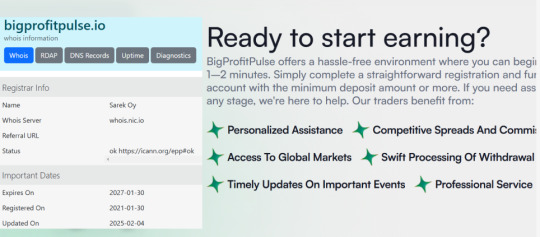
Big Profit Pulse: Strong FCA Regulation
When evaluating a broker’s legitimacy, the presence of a strong financial regulation is one of the most critical factors. In the case of BigProfitPulse.com review, the broker is regulated by the FCA (Financial Conduct Authority)—one of the most respected regulatory bodies in the financial industry.
Why is the FCA license such a big deal? The FCA is known for its strict requirements and oversight, ensuring that brokers under its jurisdiction follow transparent financial practices, maintain client fund security, and adhere to fair trading policies. Unlike offshore regulators, the FCA has the authority to penalize non-compliant brokers and even revoke licenses if necessary.
Would a scam broker operate under FCA regulation? Absolutely not. The high authority of this license means that BigProfitPulse.com reviews had to pass rigorous checks before being approved. This is another solid argument for the broker’s legitimacy—companies looking to deceive traders don’t put themselves under such scrutiny.
BigProfitPulse.io: Trustpilot Ratings and User Feedback
One of the strongest indicators of a broker’s reputation is real user feedback. BigProfitPulse.io review has a Trustpilot score of 3.9, based on 25 reviews, with 24 of them being rated 4 or 5 stars.
Let’s break this down. A 3.9 rating might not seem outstanding at first glance, but in the trading industry, where even top brokers get mixed reviews due to the volatile nature of trading, this is actually quite decent. What really stands out is the proportion of positive reviews—95% of users gave it high ratings. This suggests that most traders had a good experience, with very few reporting issues.
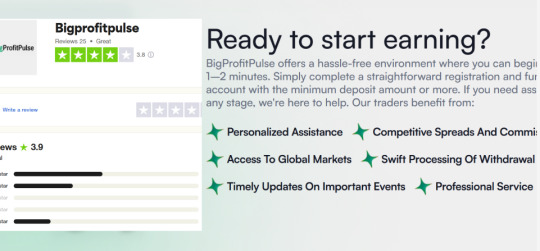
BigProfitPulse.io Review: Final Verdict – Legit or Not?
After carefully analyzing BigProfitPulse.io review, there are several strong indicators that point to its legitimacy. First and foremost, the broker is regulated by the FCA, one of the most trusted financial authorities in the industry. This alone sets it apart from many unregulated or offshore brokers that operate without oversight.
The domain registration date (2021) matches the brand’s launch timeline (2022), which suggests a planned and professional approach, rather than a rushed, opportunistic setup. Additionally, while the Trustpilot score of 3.9 isn’t the highest in the industry, the fact that 95% of reviews are 4 or 5 stars indicates that the majority of traders have had a positive experience.
Another factor in its favor is the trading infrastructure—a dedicated mobile app, multiple fast and fee-free deposit/withdrawal options, and a range of trading tools. Would a scam broker go through all this effort to create a well-rounded platform? Unlikely.
Considering all these factors, it’s fair to say that BigProfitPulse.io review appears to be a legitimate and trustworthy broker. While no platform is perfect, the presence of strong regulation, positive user feedback, and a structured trading environment makes this broker stand out as a reliable choice for traders.
9 notes
·
View notes
Text

New process creates ordered semiconductor material at room temperature
Scientists at the University of Twente have developed a way to create highly ordered semiconductor material at room temperature. This UT research was published today in Nature Synthesis. This breakthrough could make optoelectronics more efficient by controlling the crystal structure and reducing the number of defects at the nanoscale. The team focused on a material called metal halide perovskites, known for its ability to absorb sunlight efficiently and its use in devices like LEDs, semiconductors and solar cells. Making these materials with one single orientation (or in other words with highly ordered grains) has been a challenge. Up to date, this has mainly been used in the polycrystalline form. In other words, in a non-ordered fashion. This can limit their use in applications, such as LEDs, where high order and low density of defects are needed. Normally, these highly ordered semiconductors require high processing temperatures. But in this new process, the UT researchers skip the heat and build up the material layer by layer using a pulsed laser.
Read more.
9 notes
·
View notes